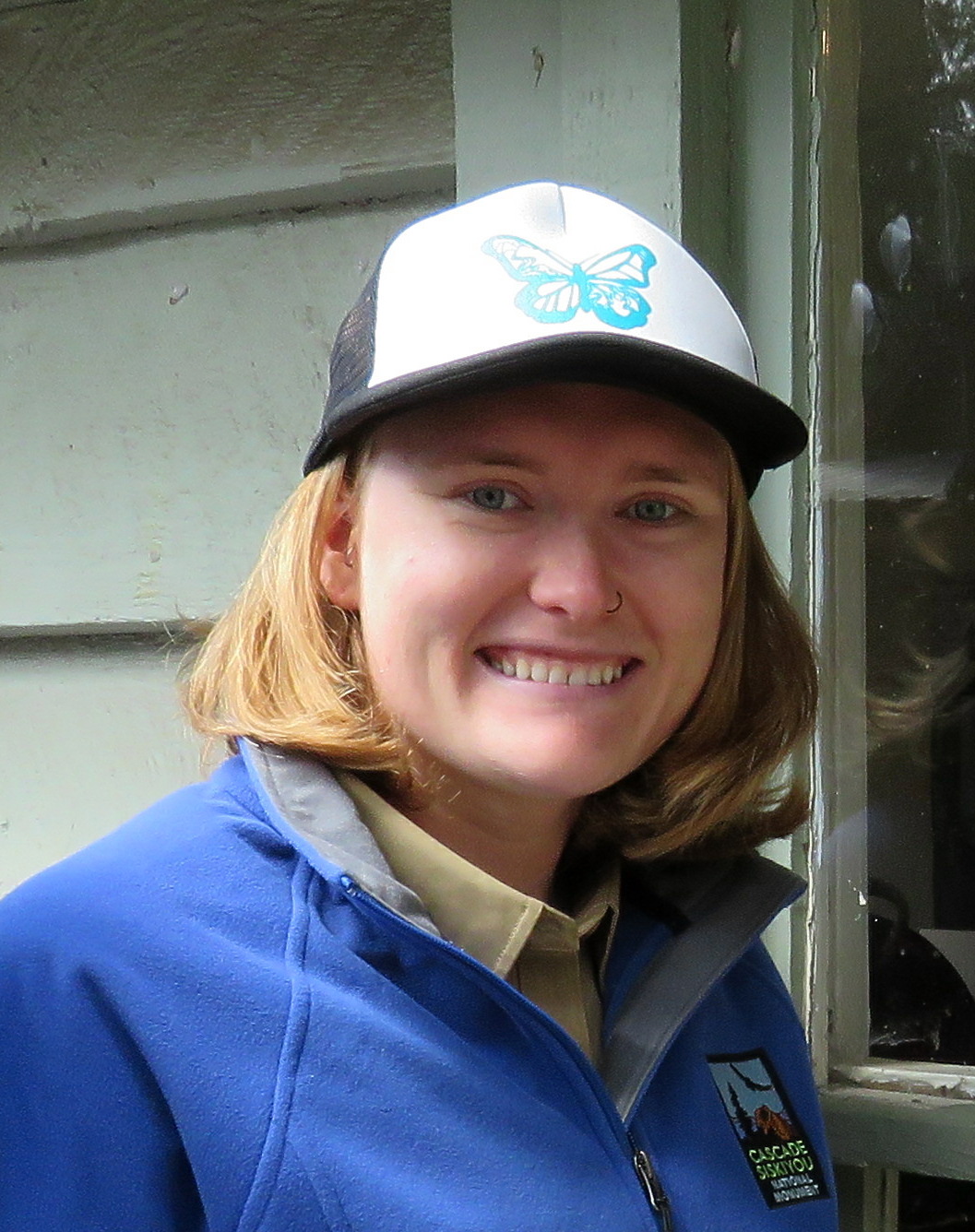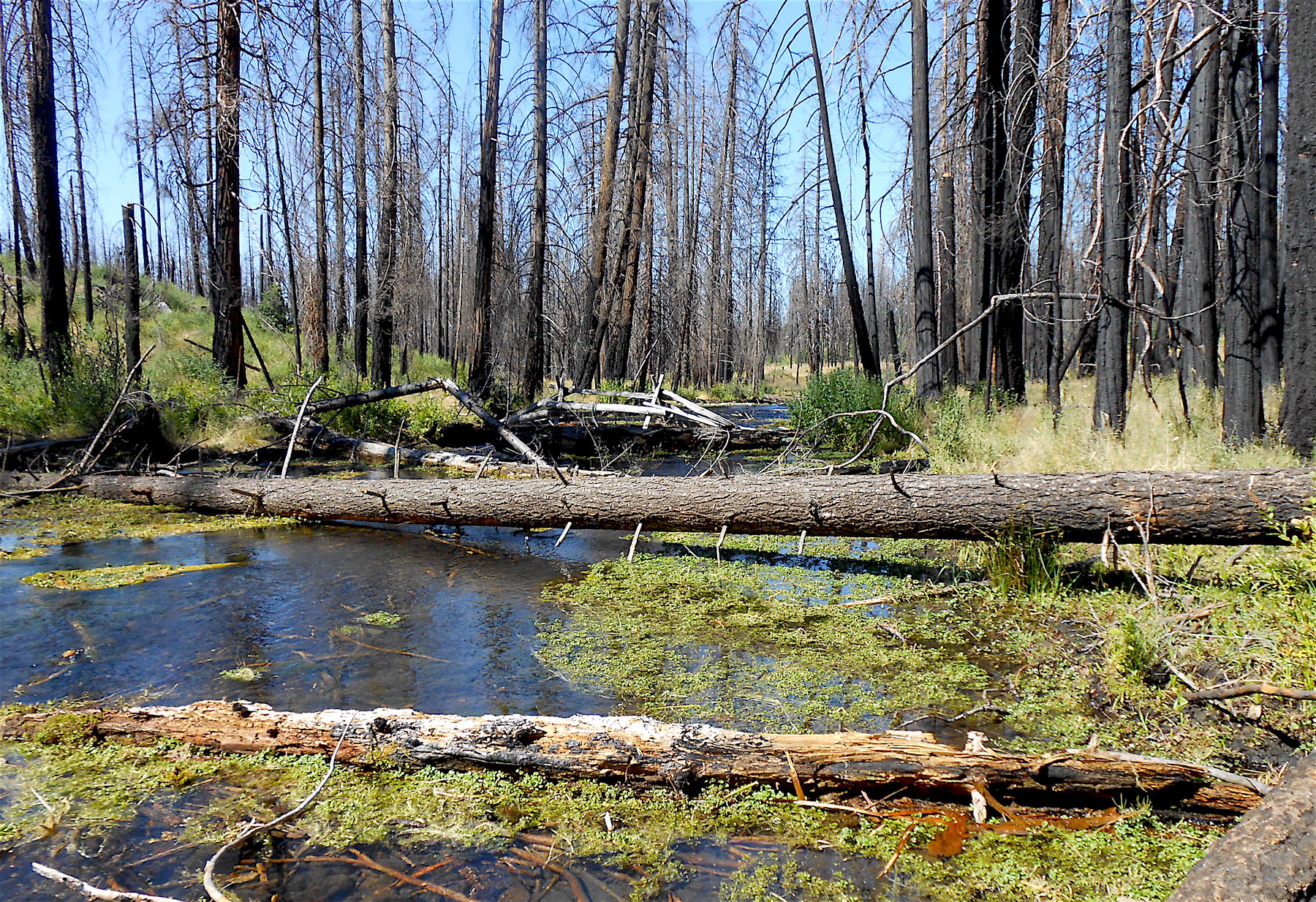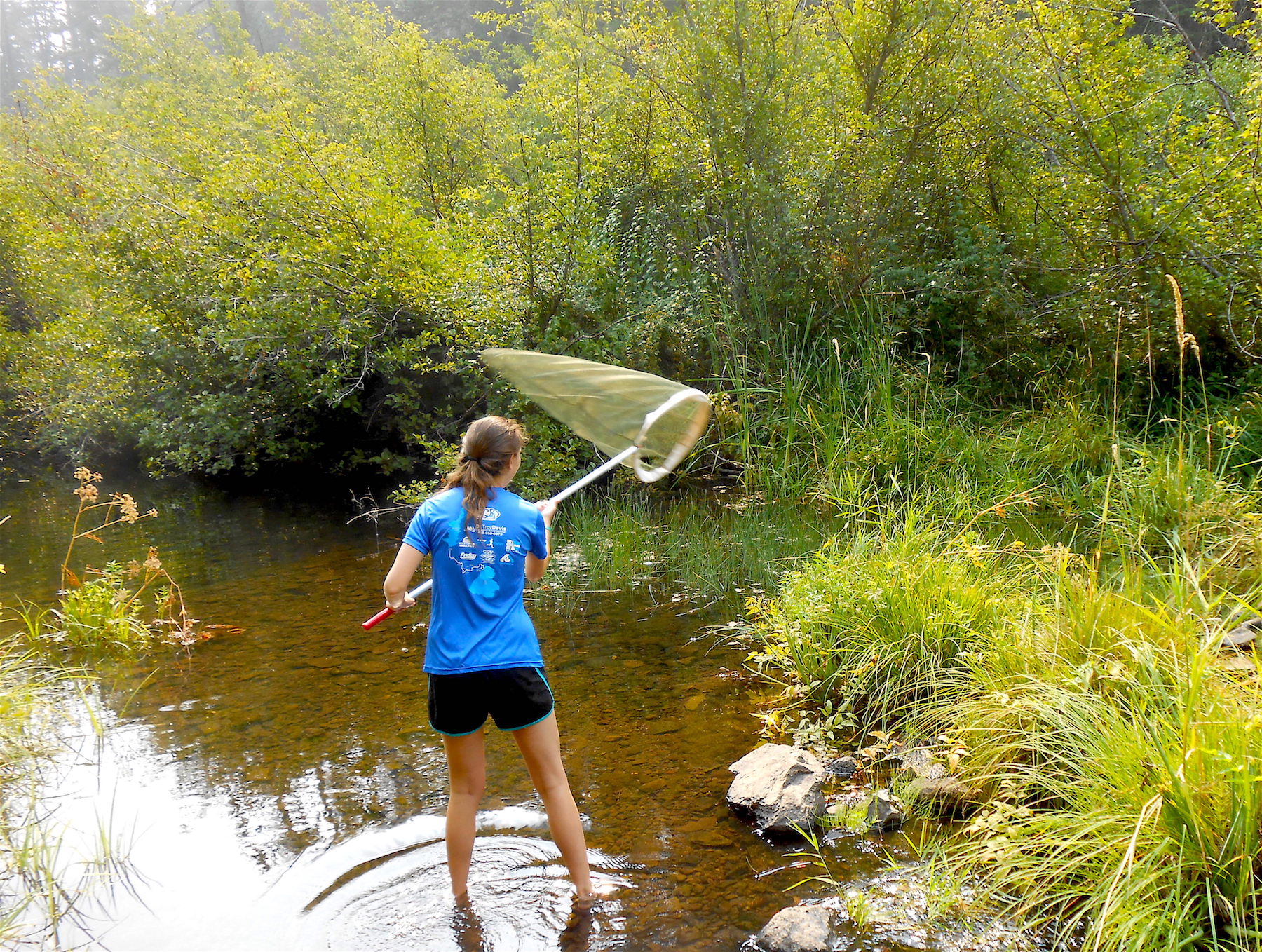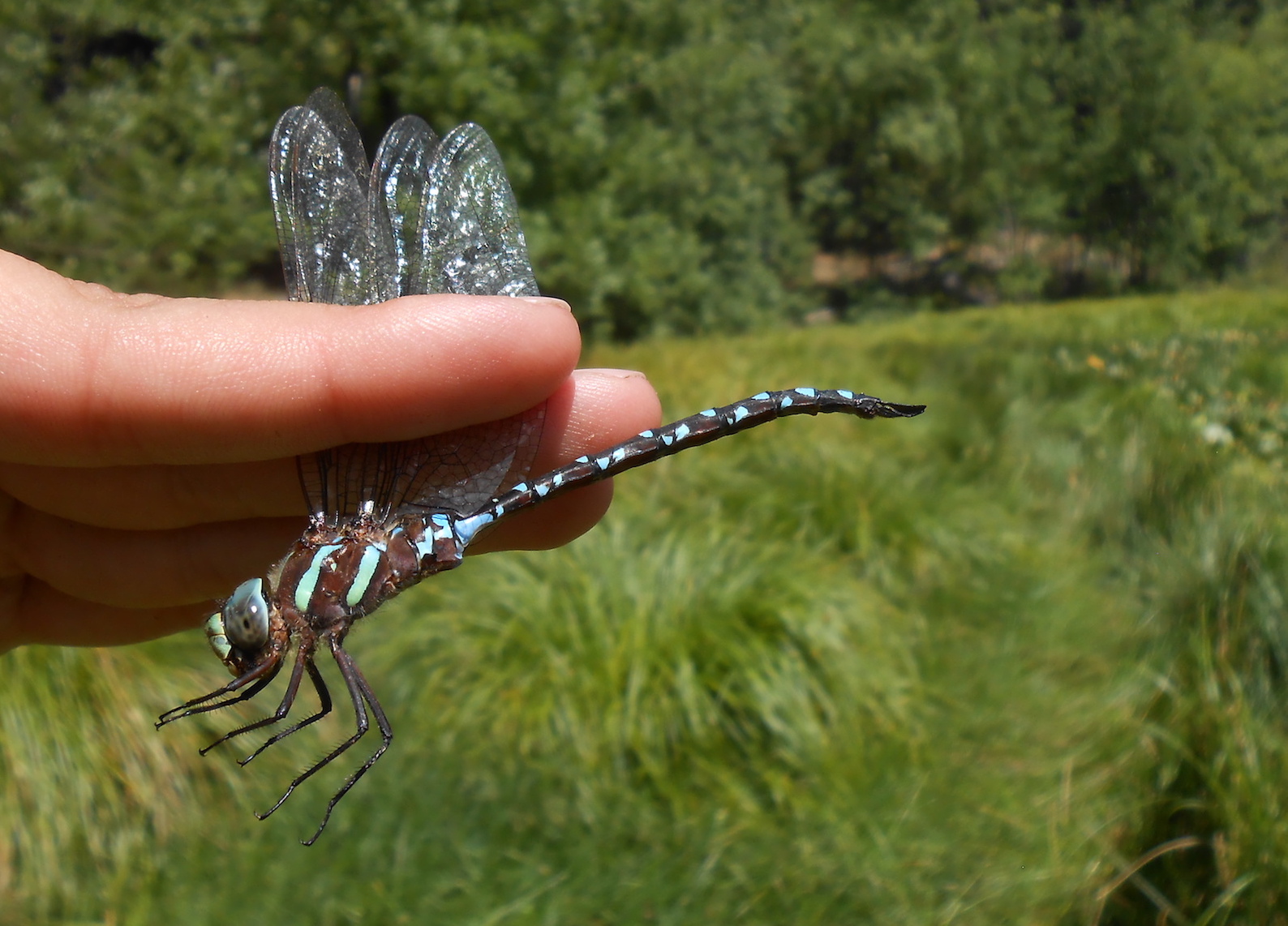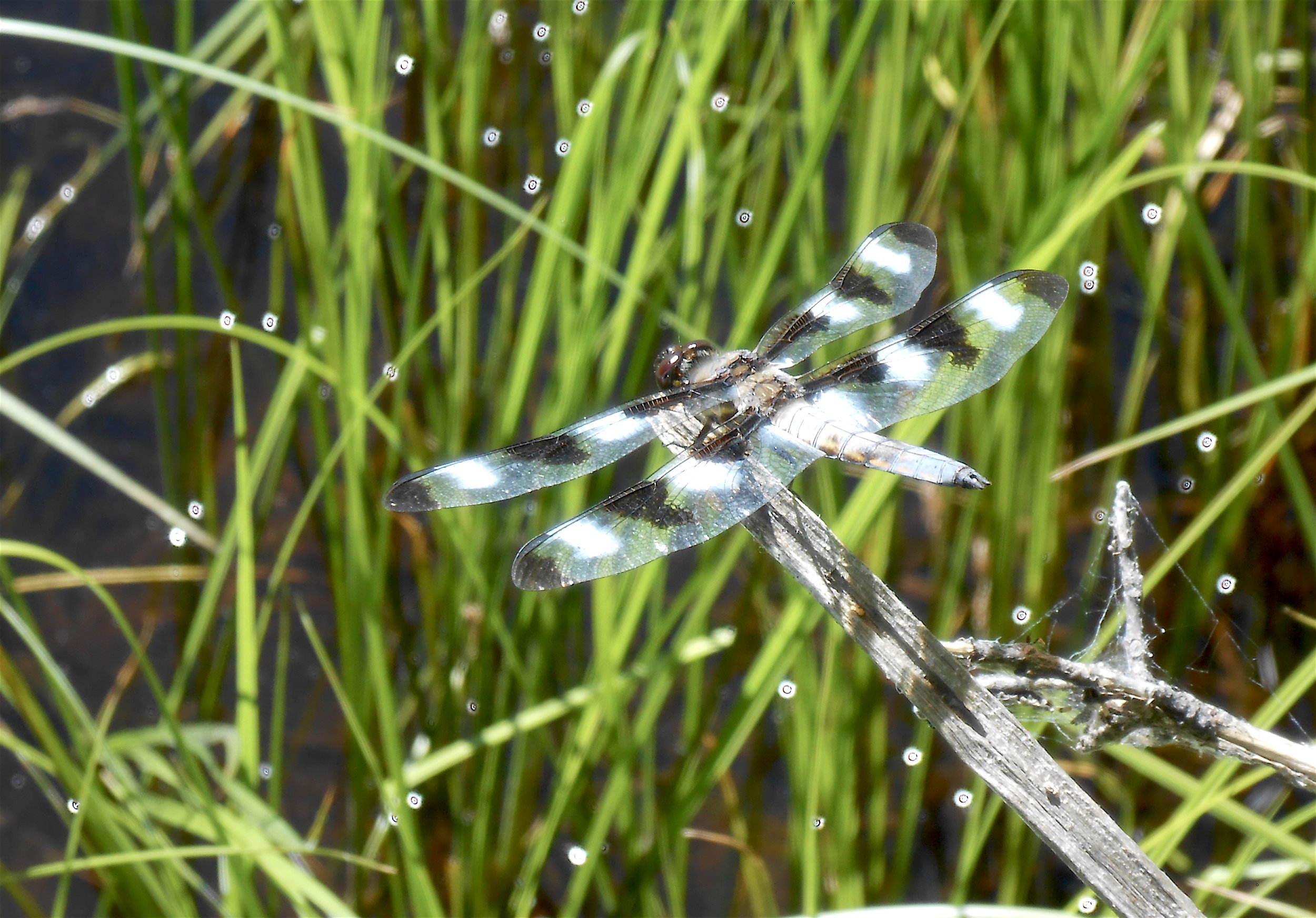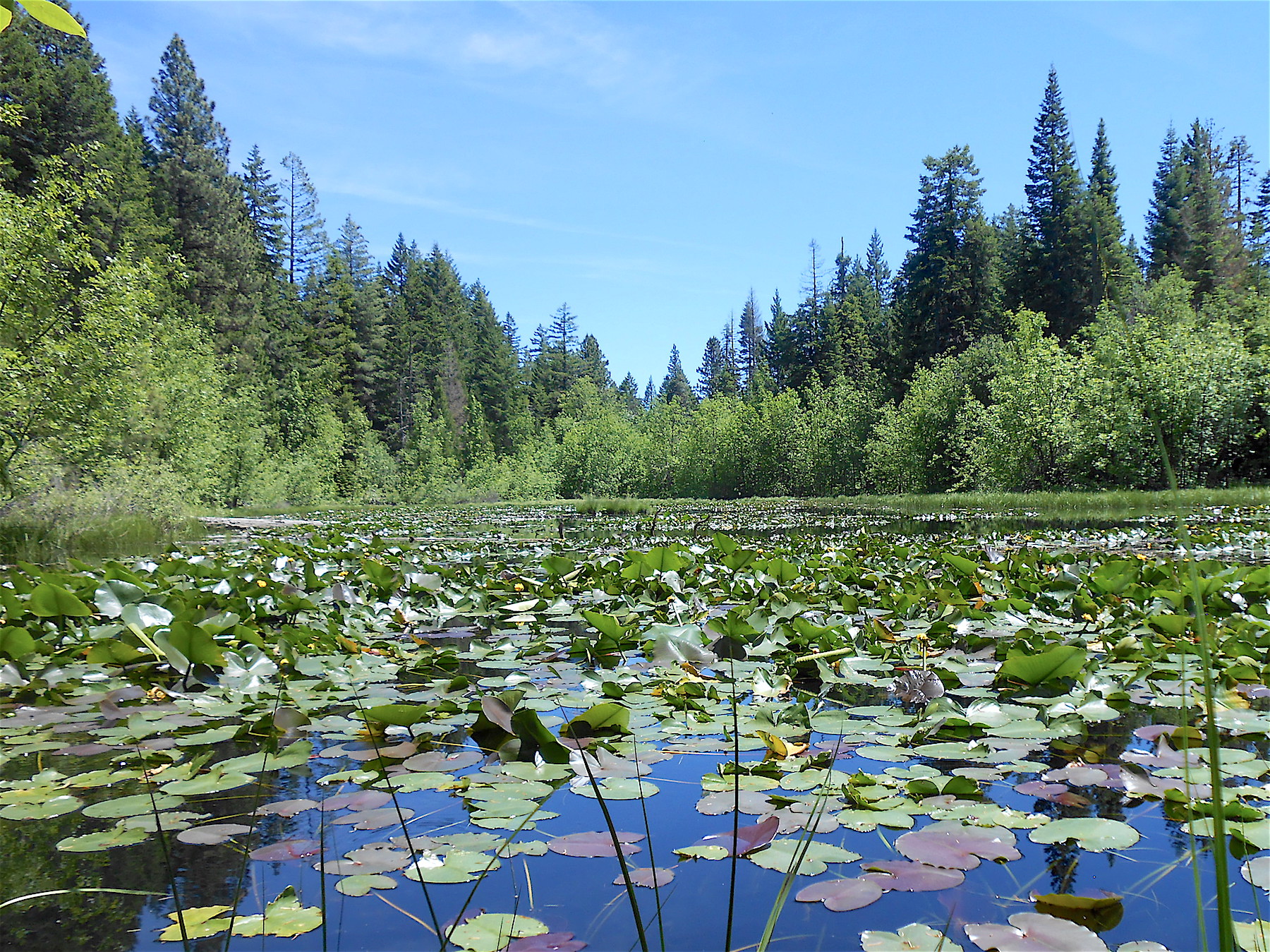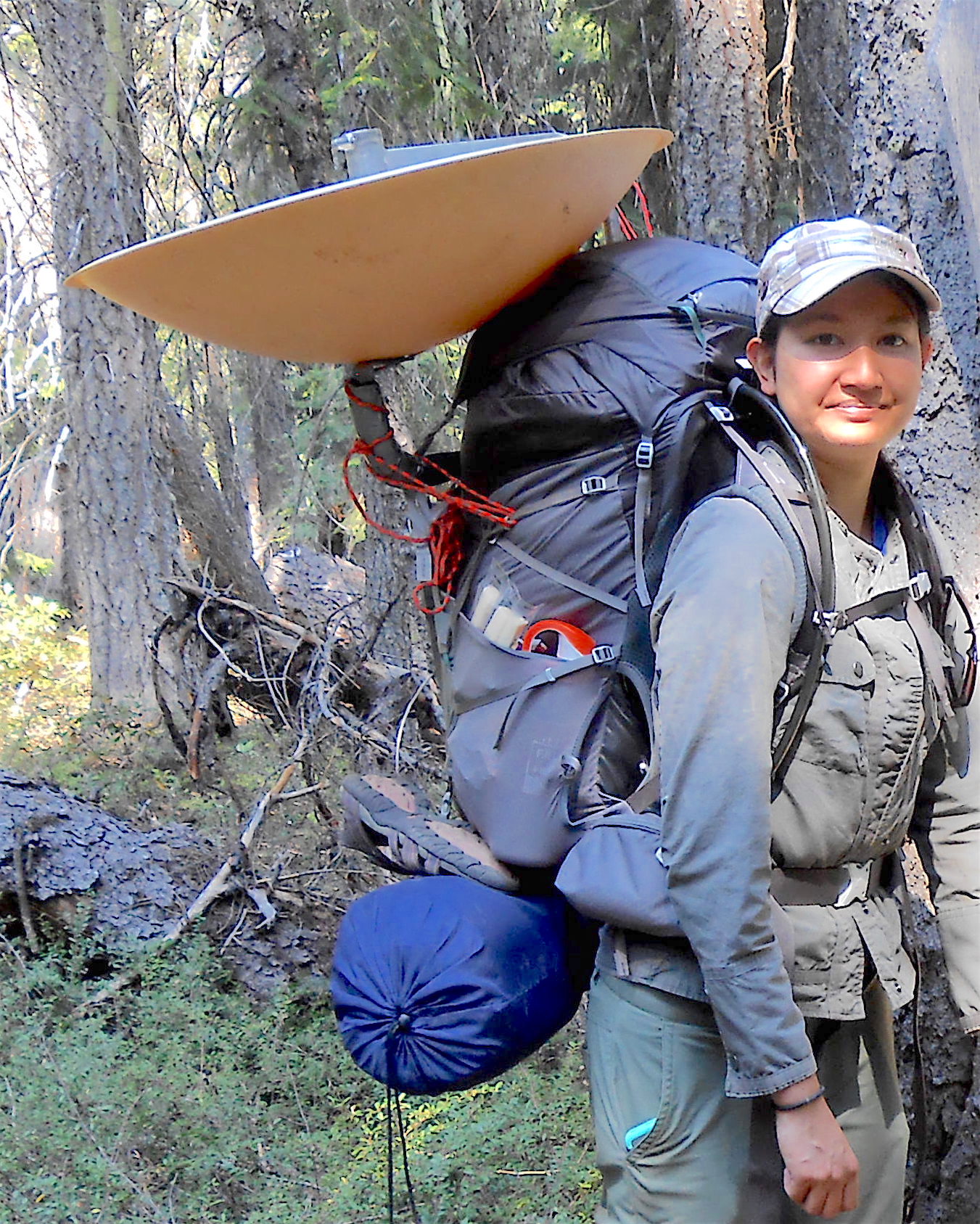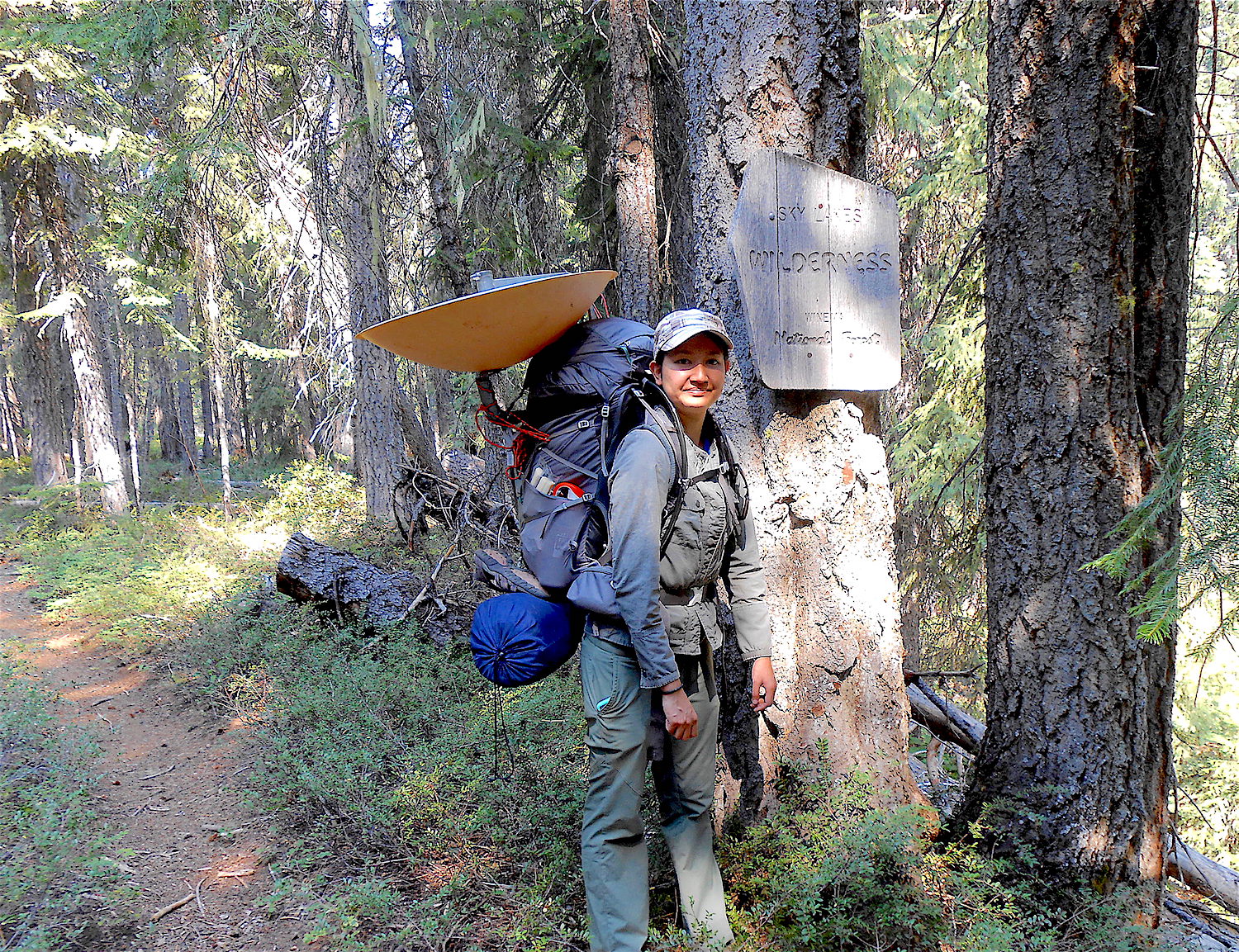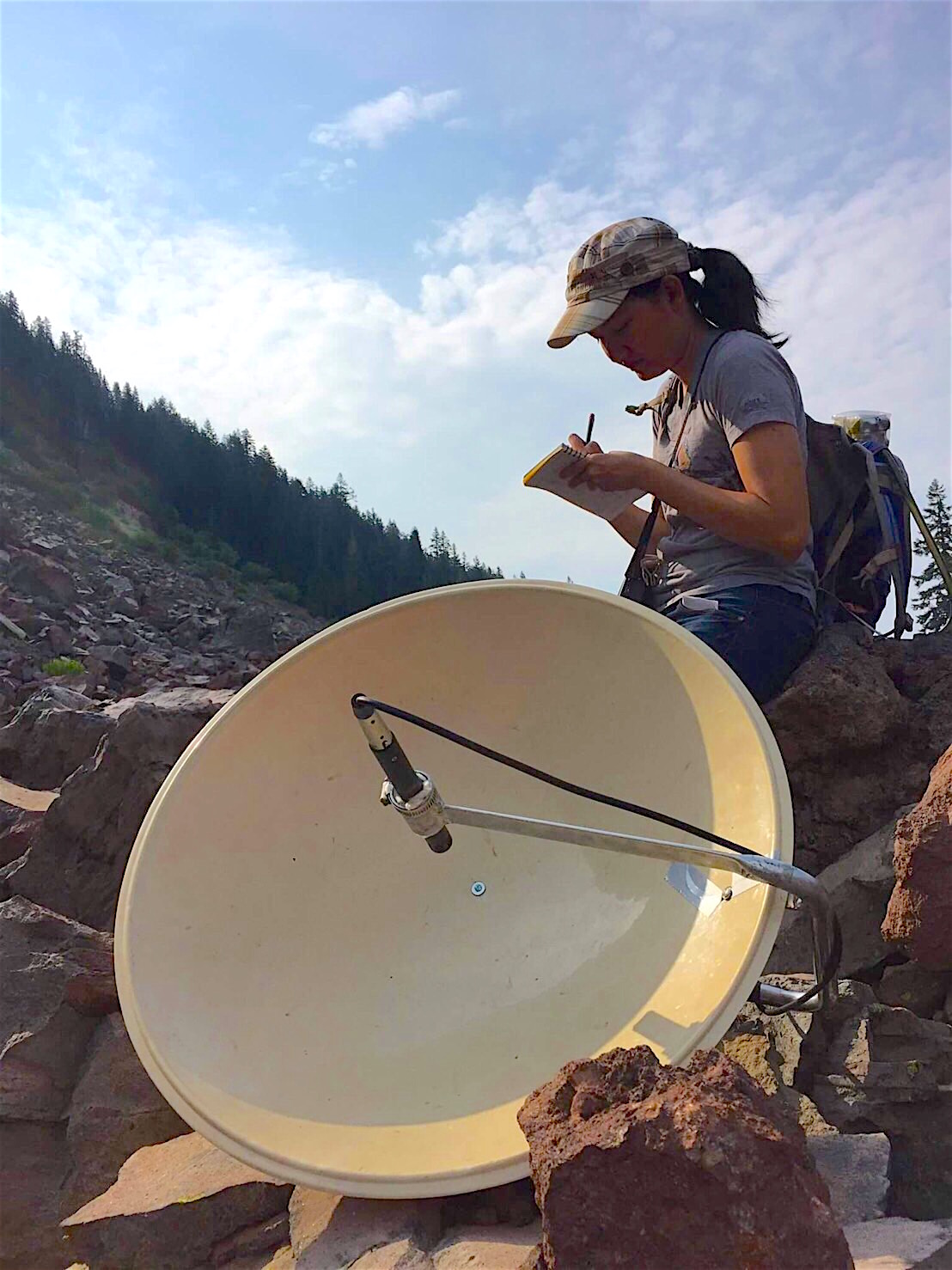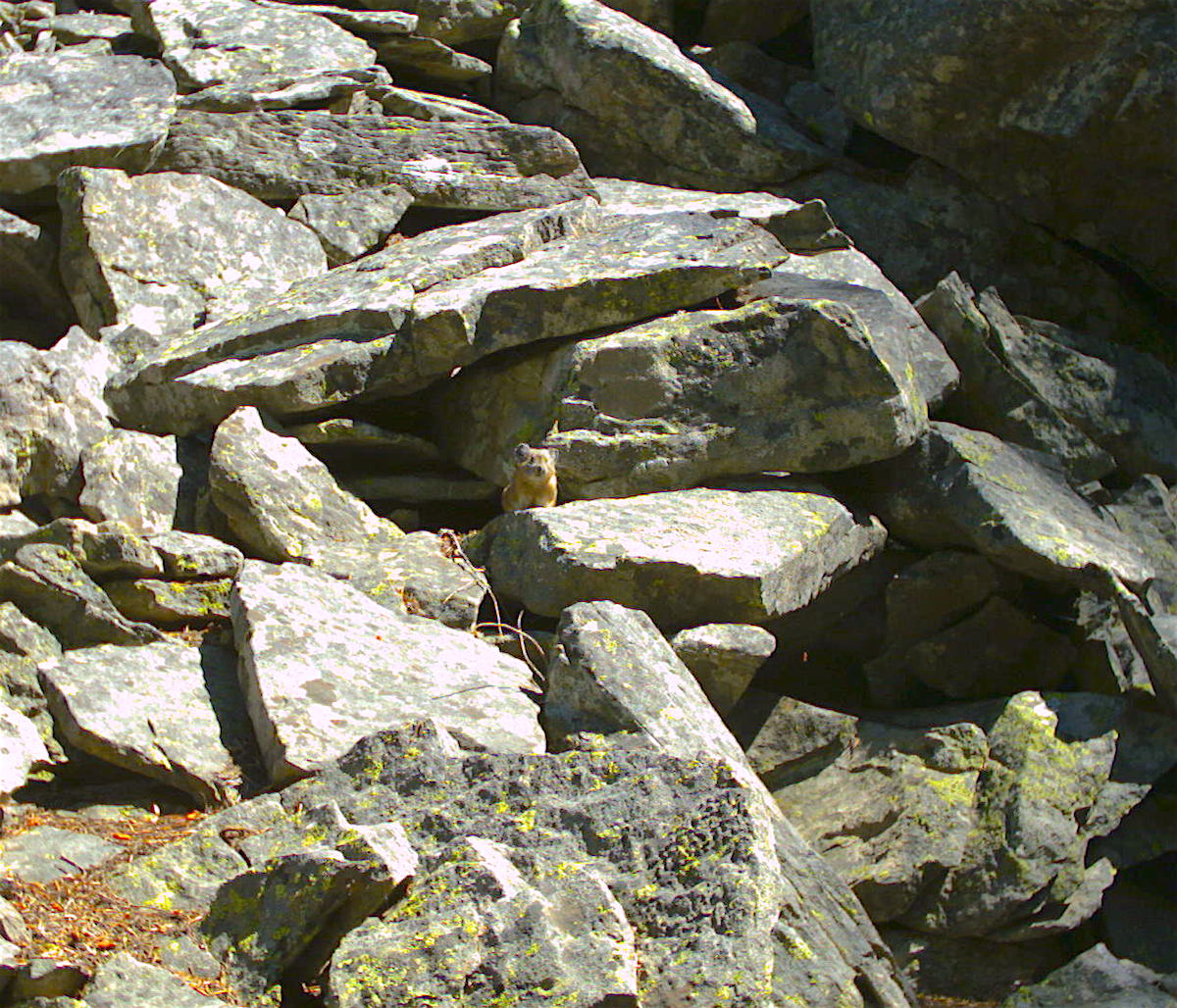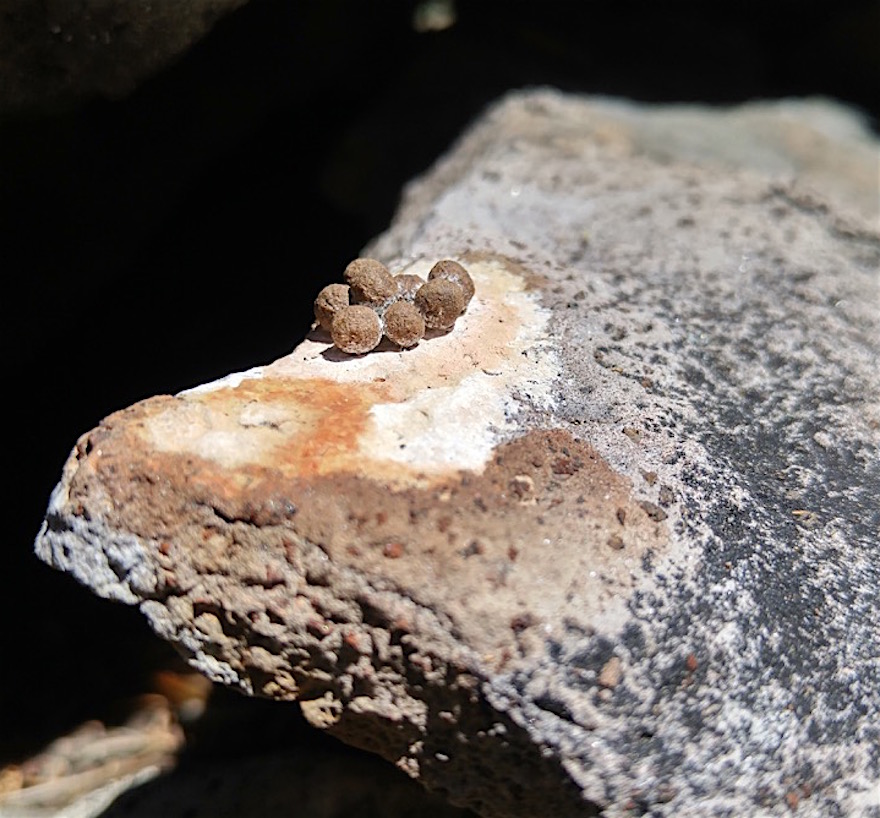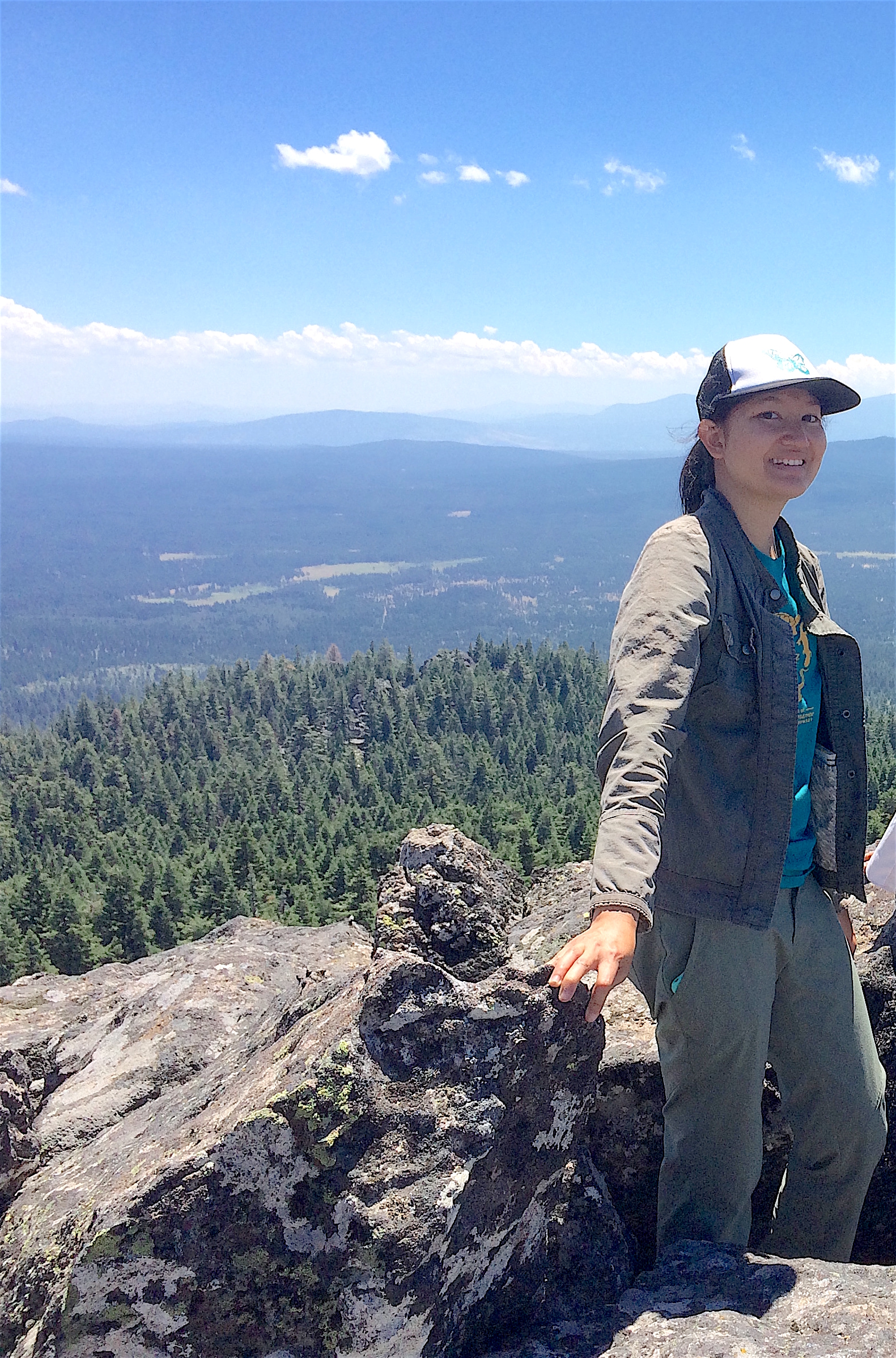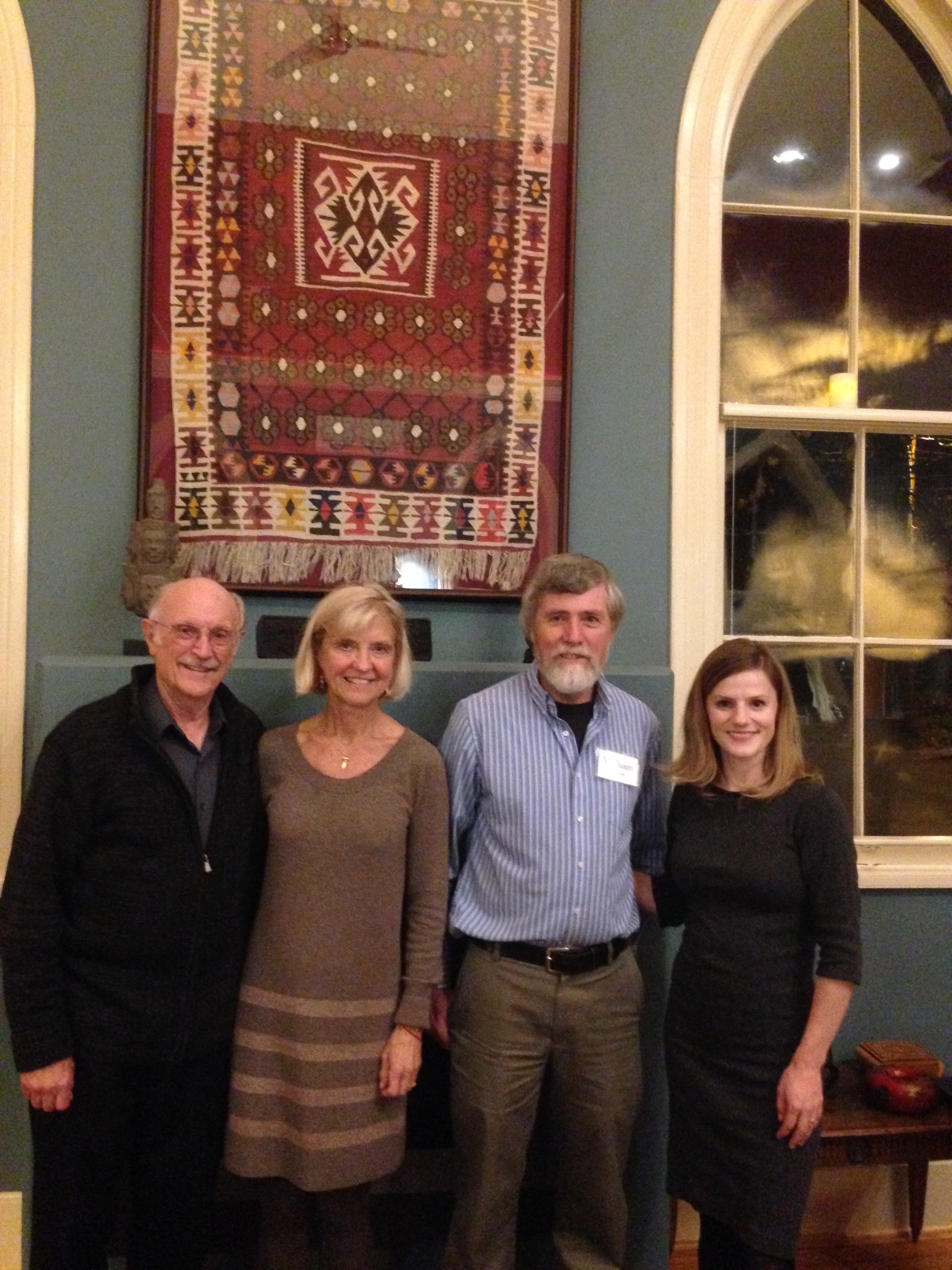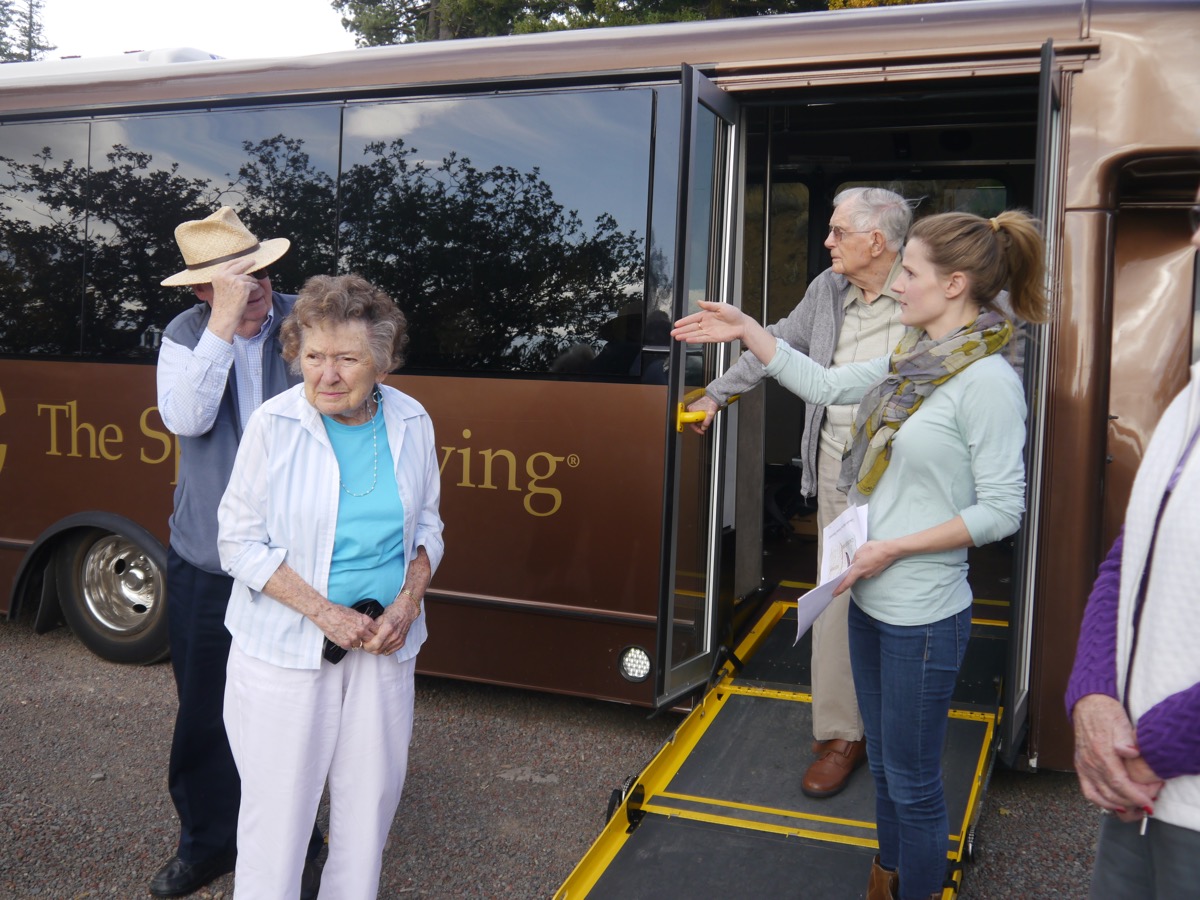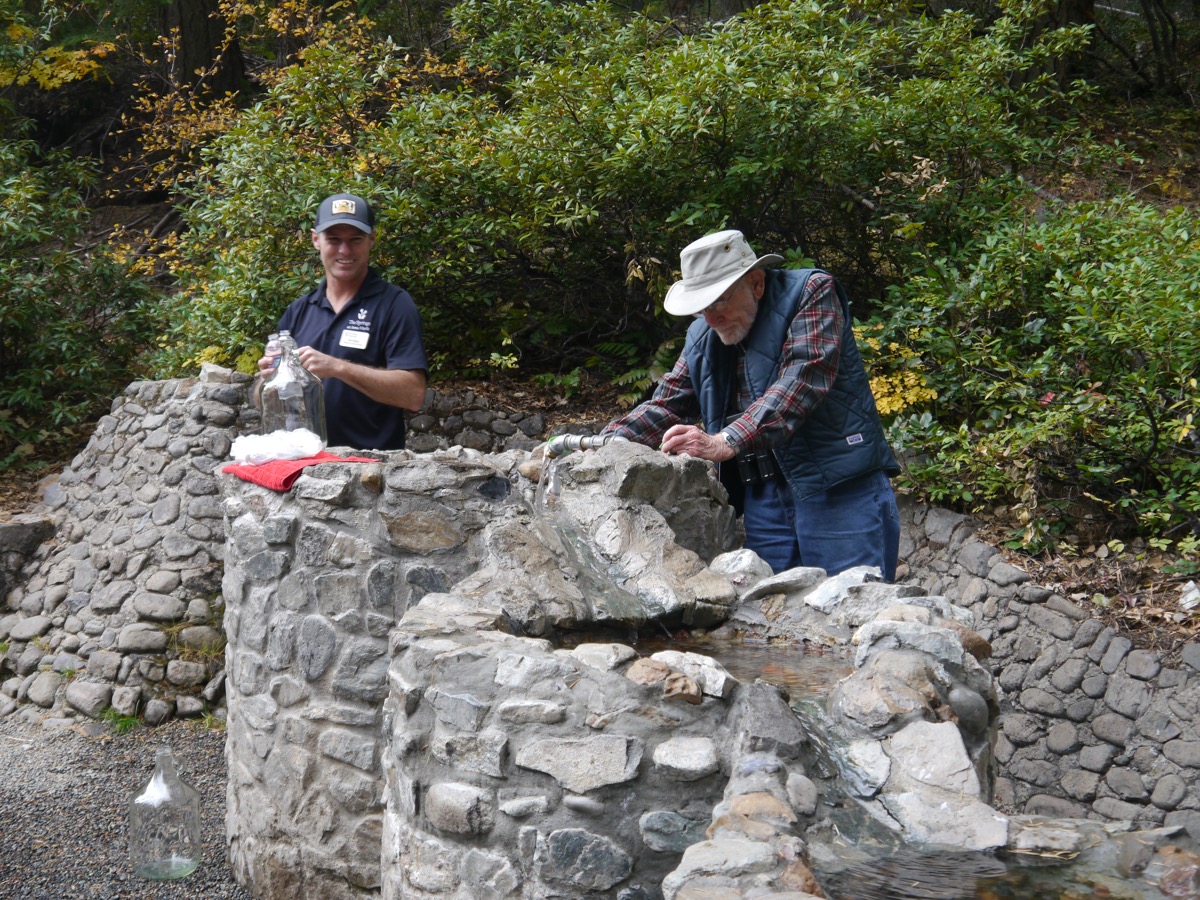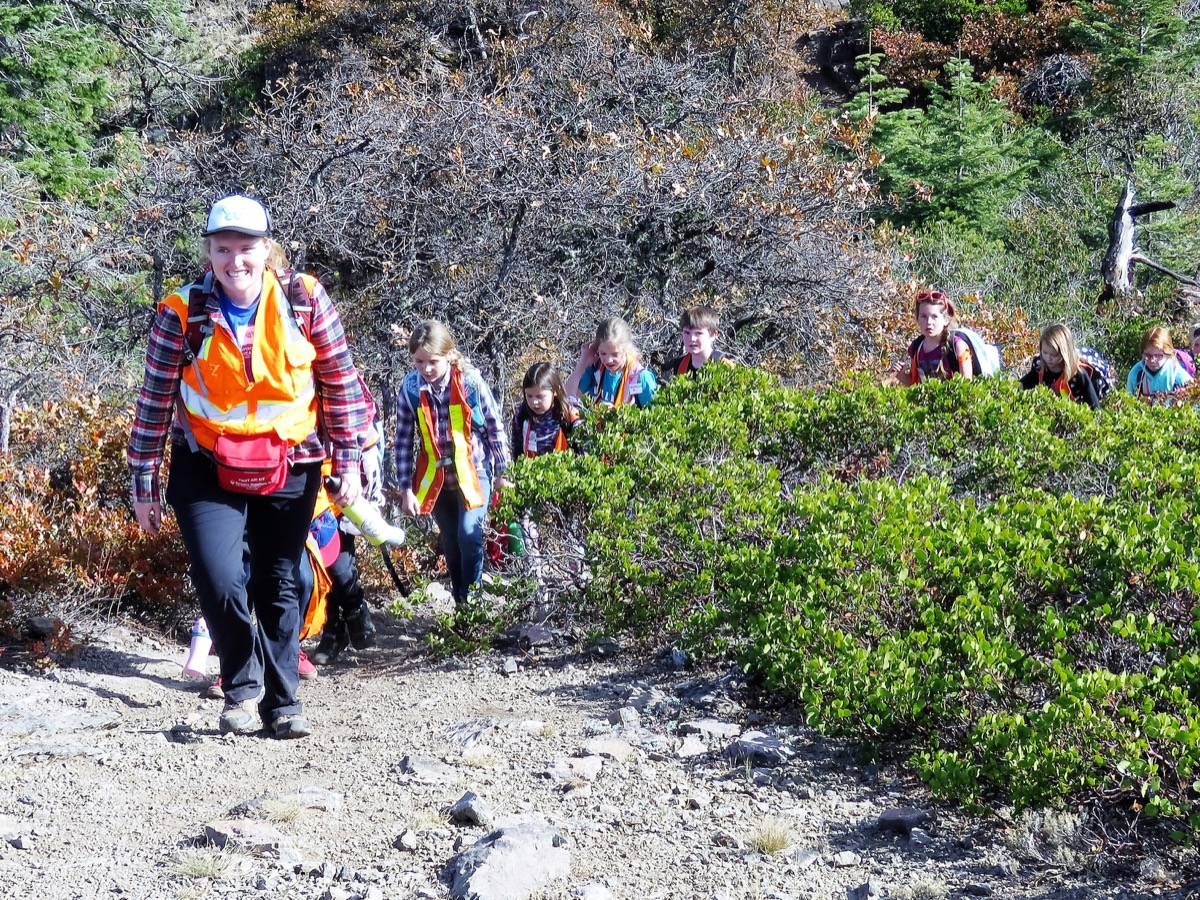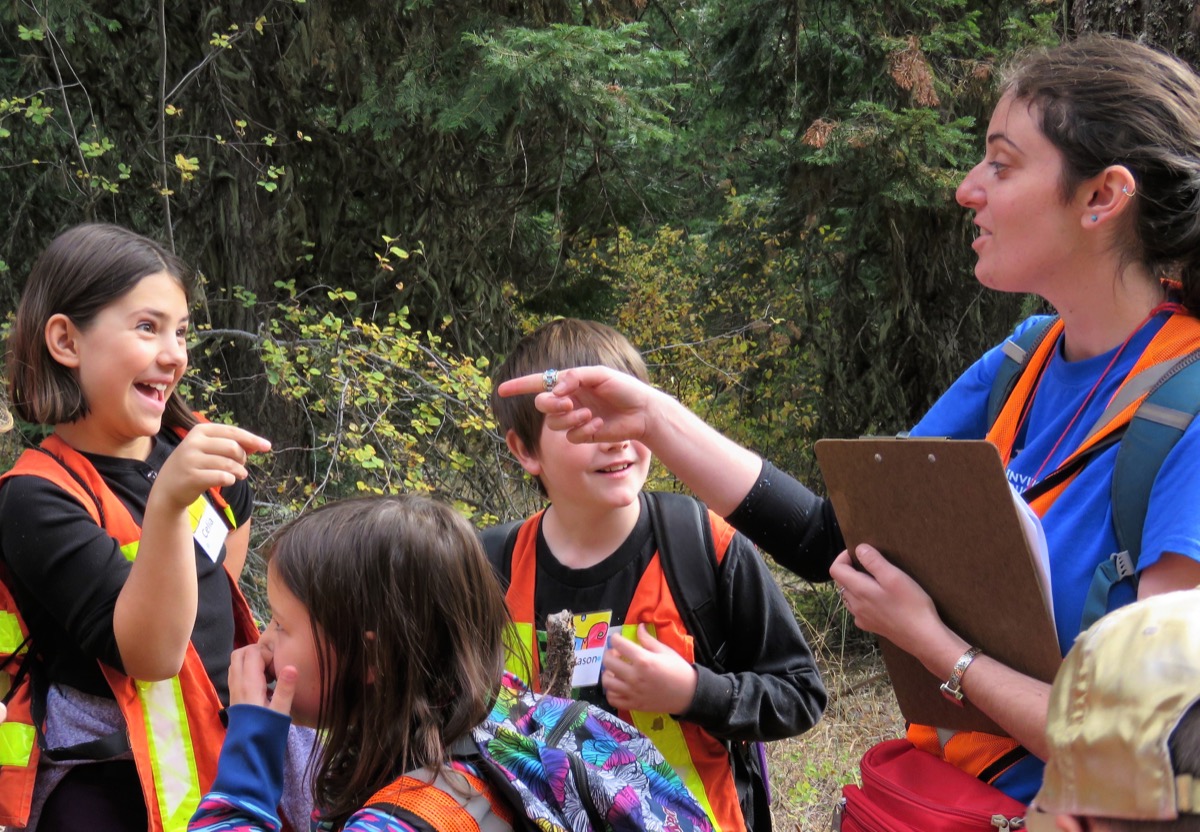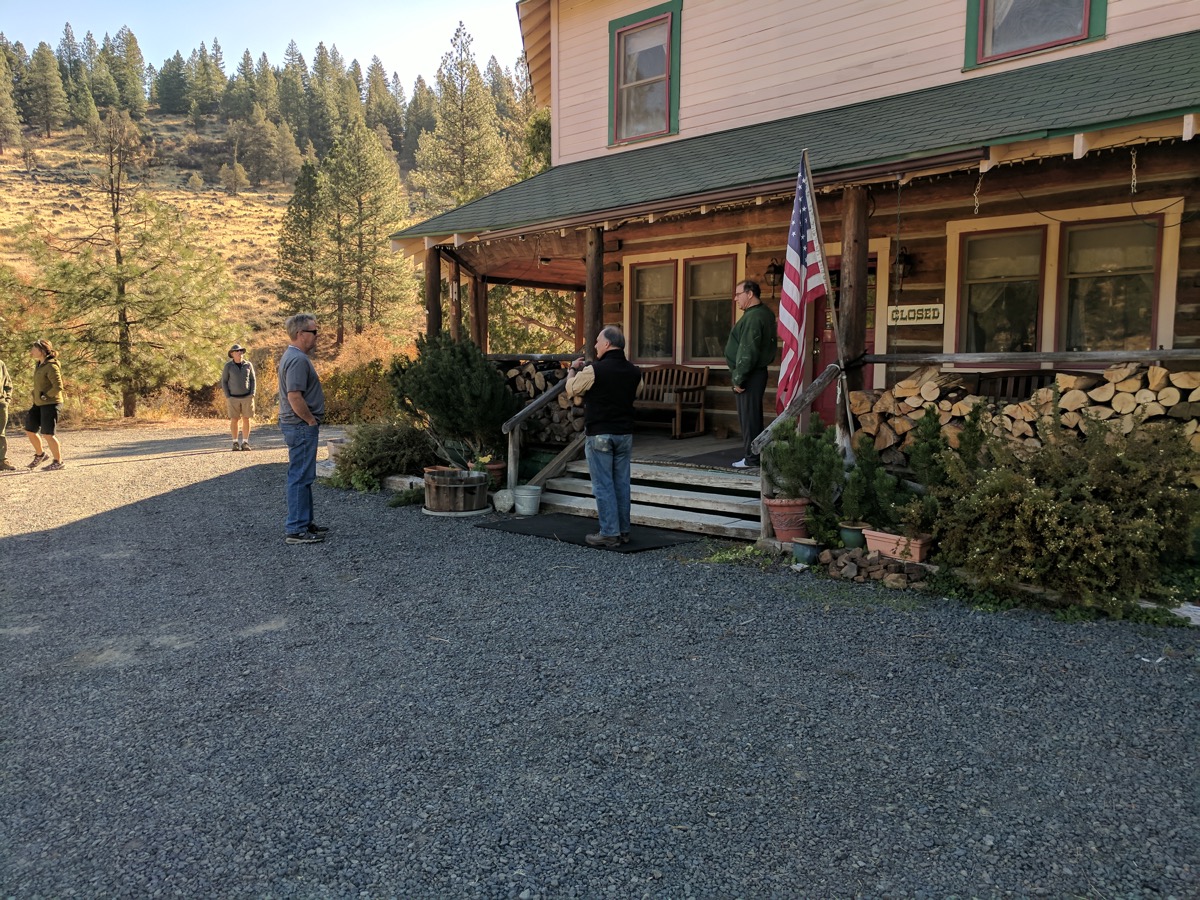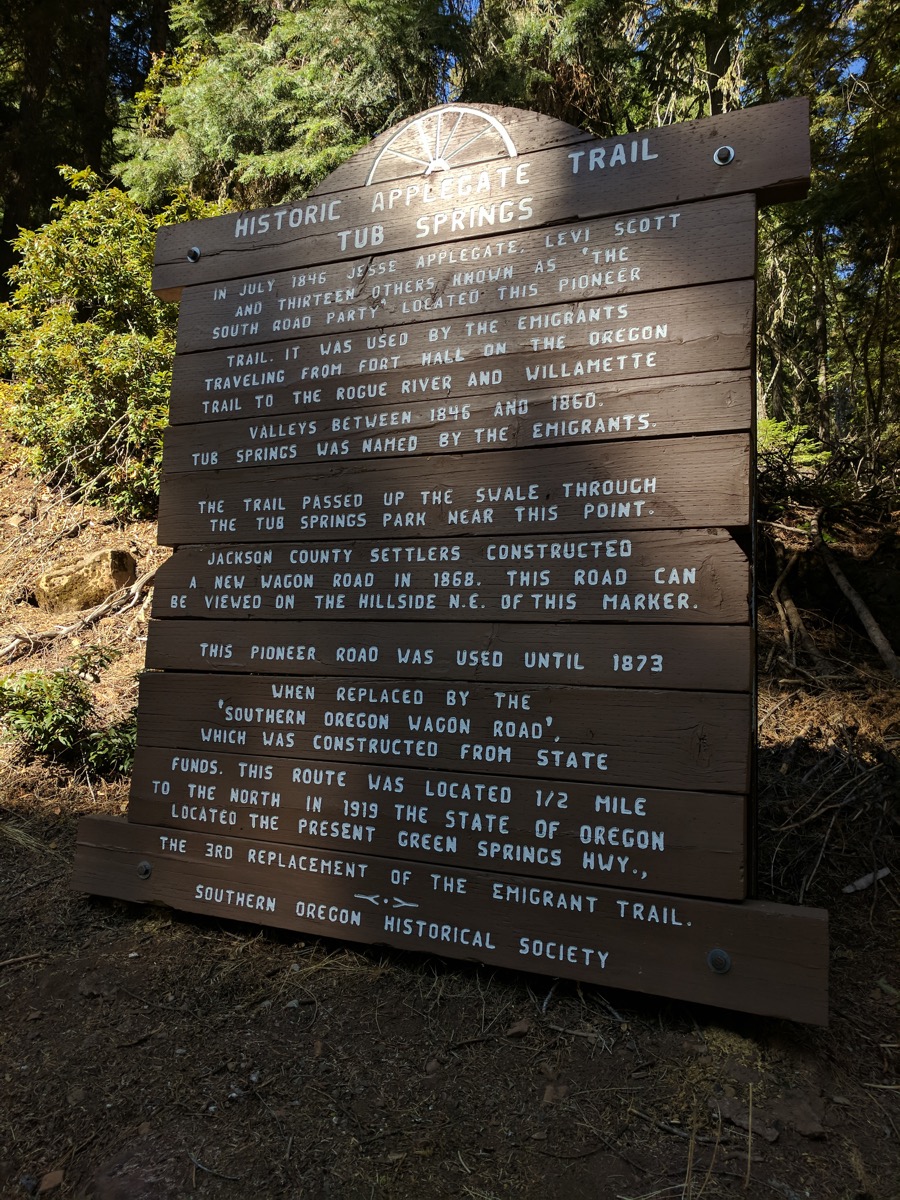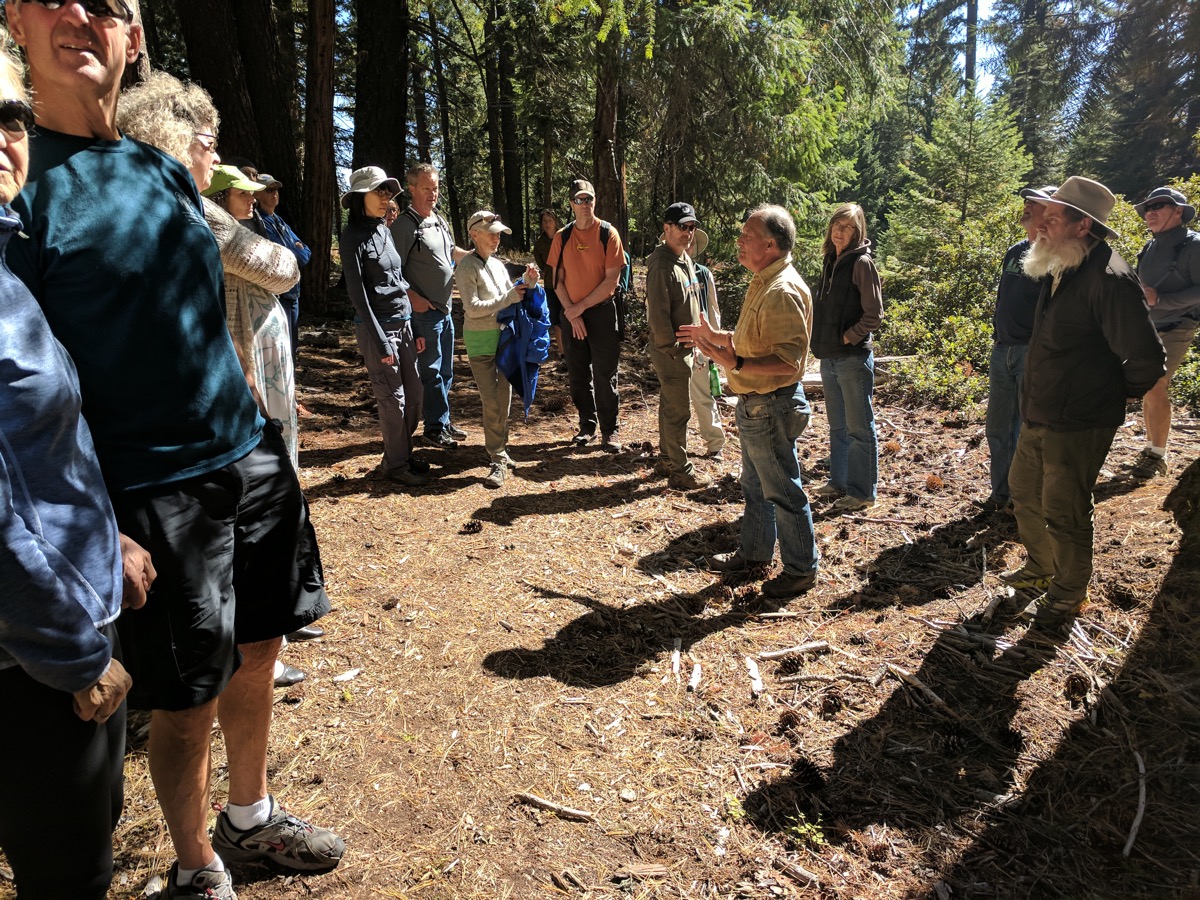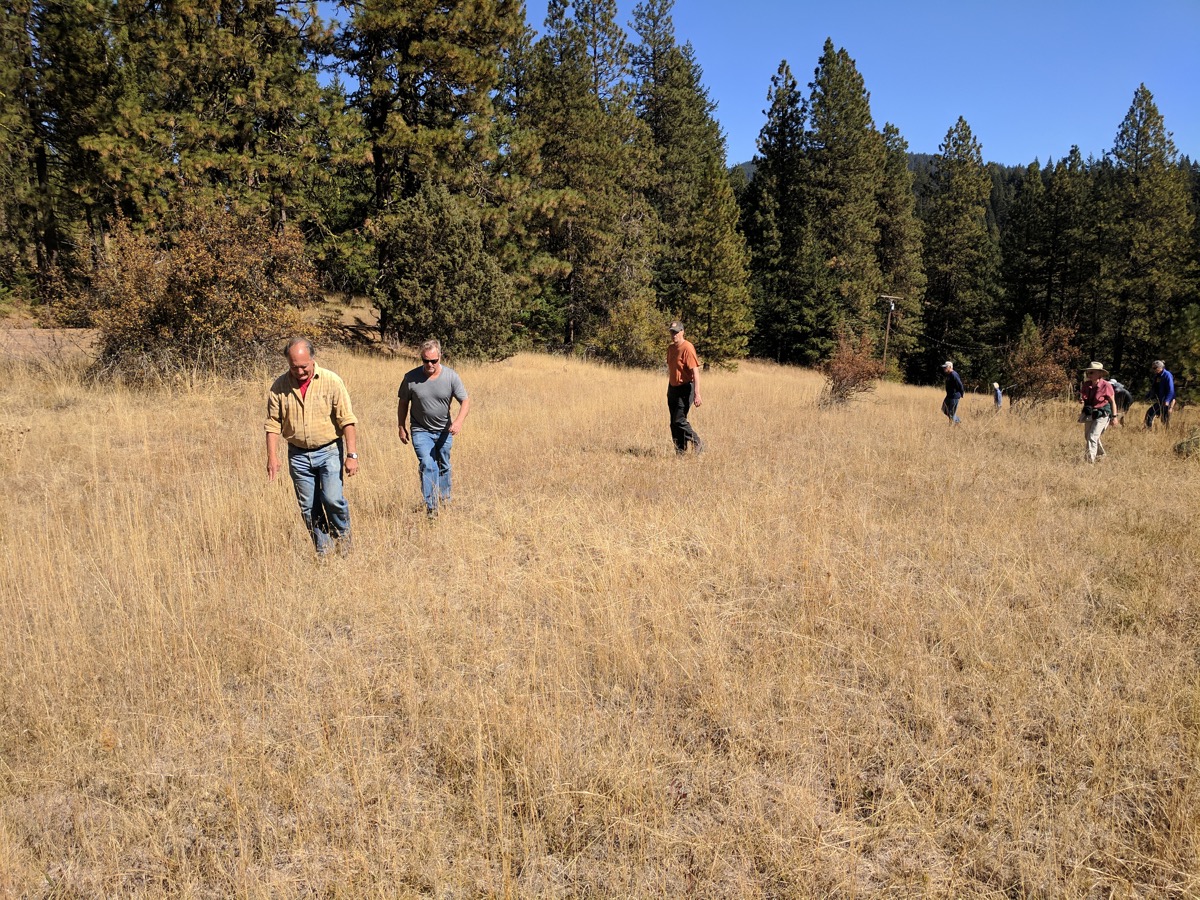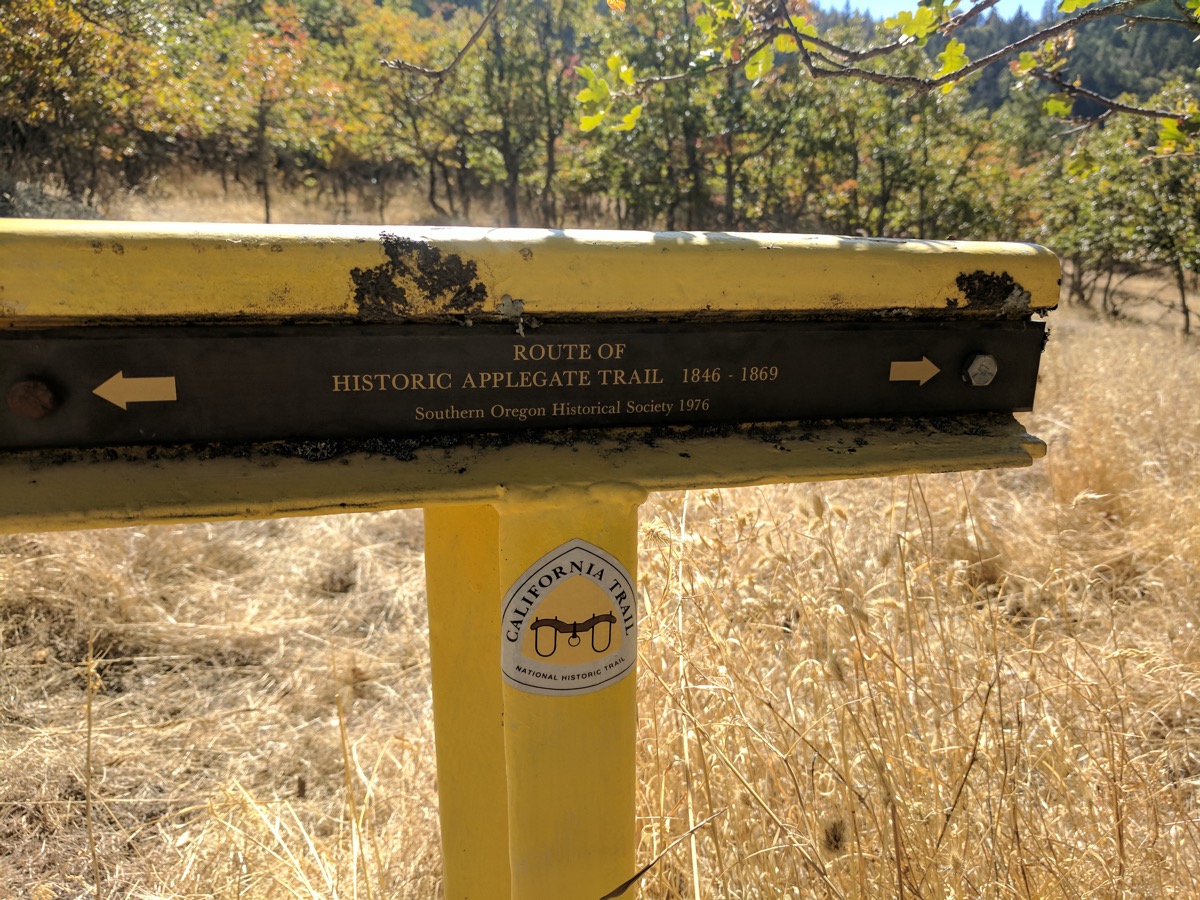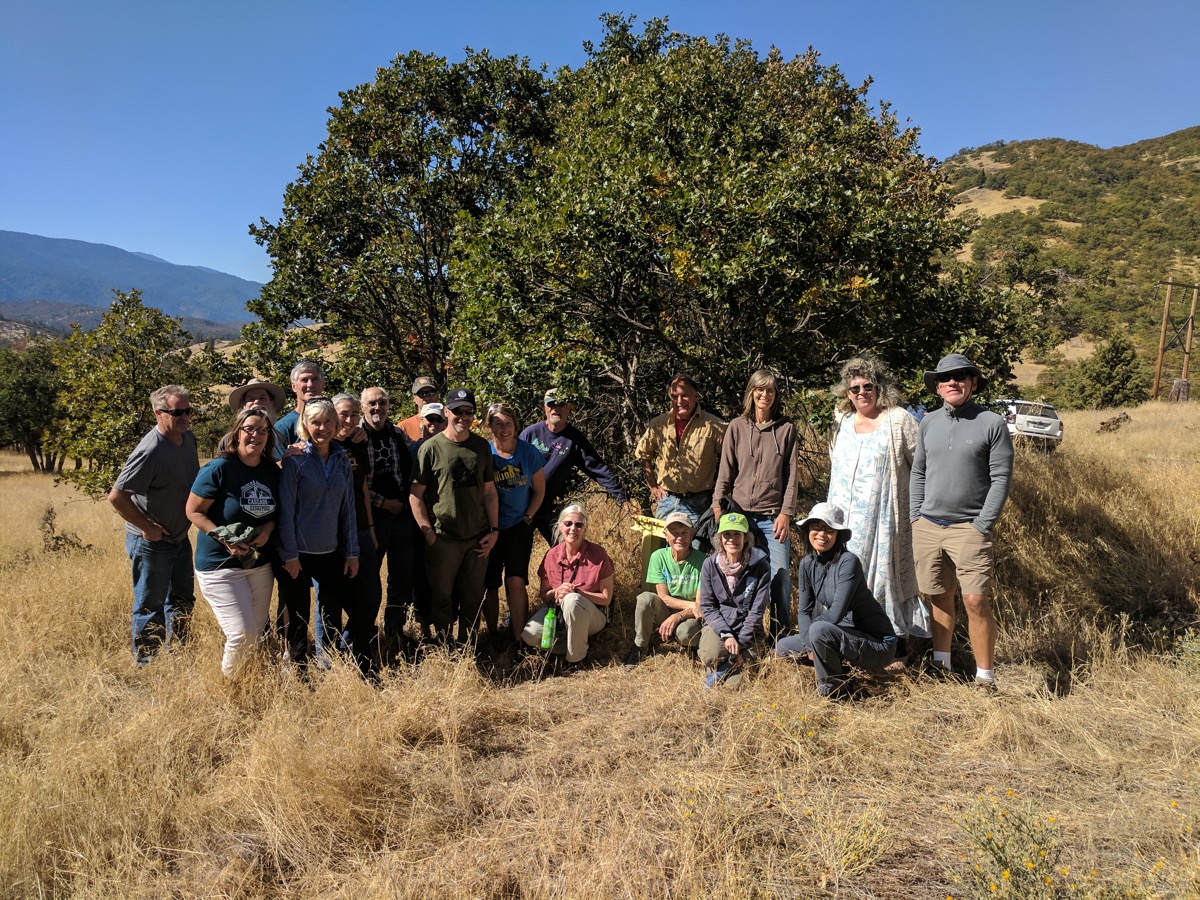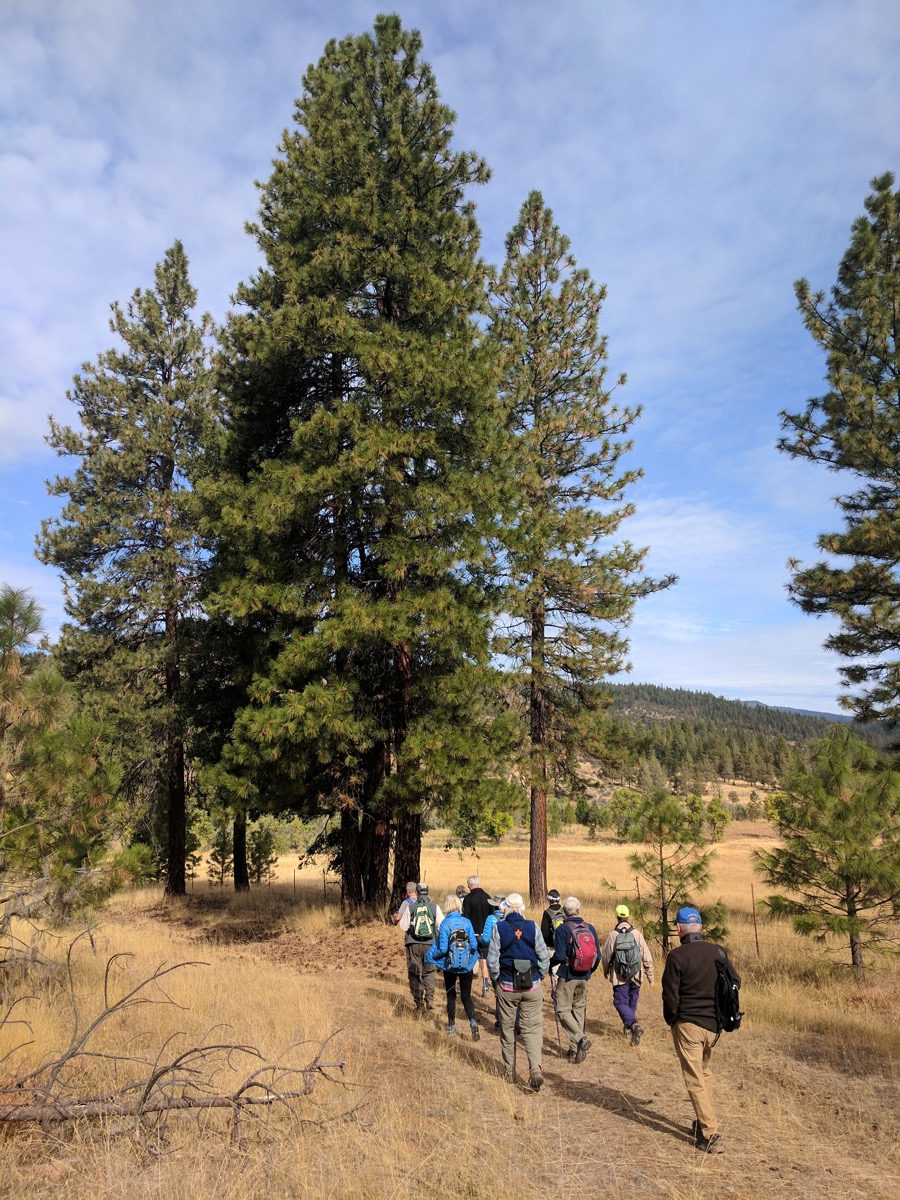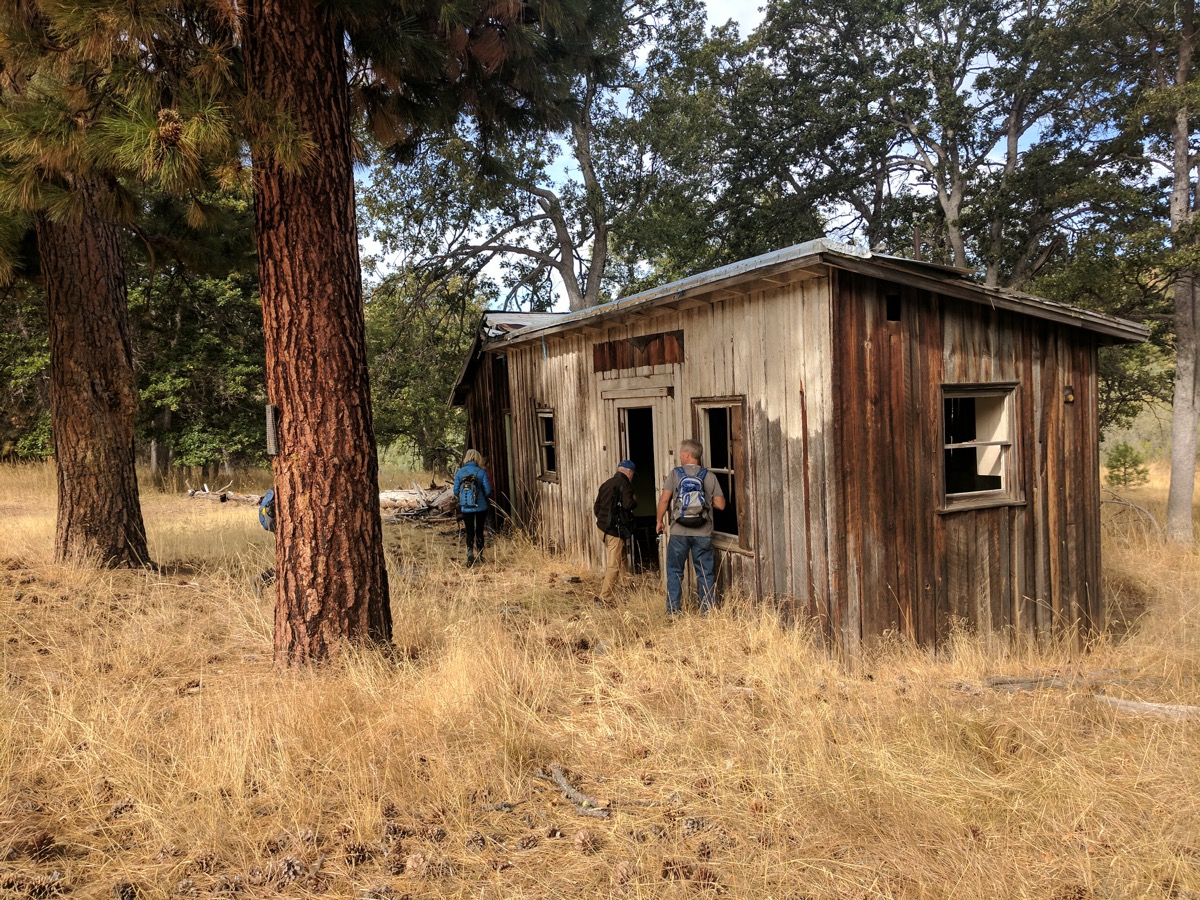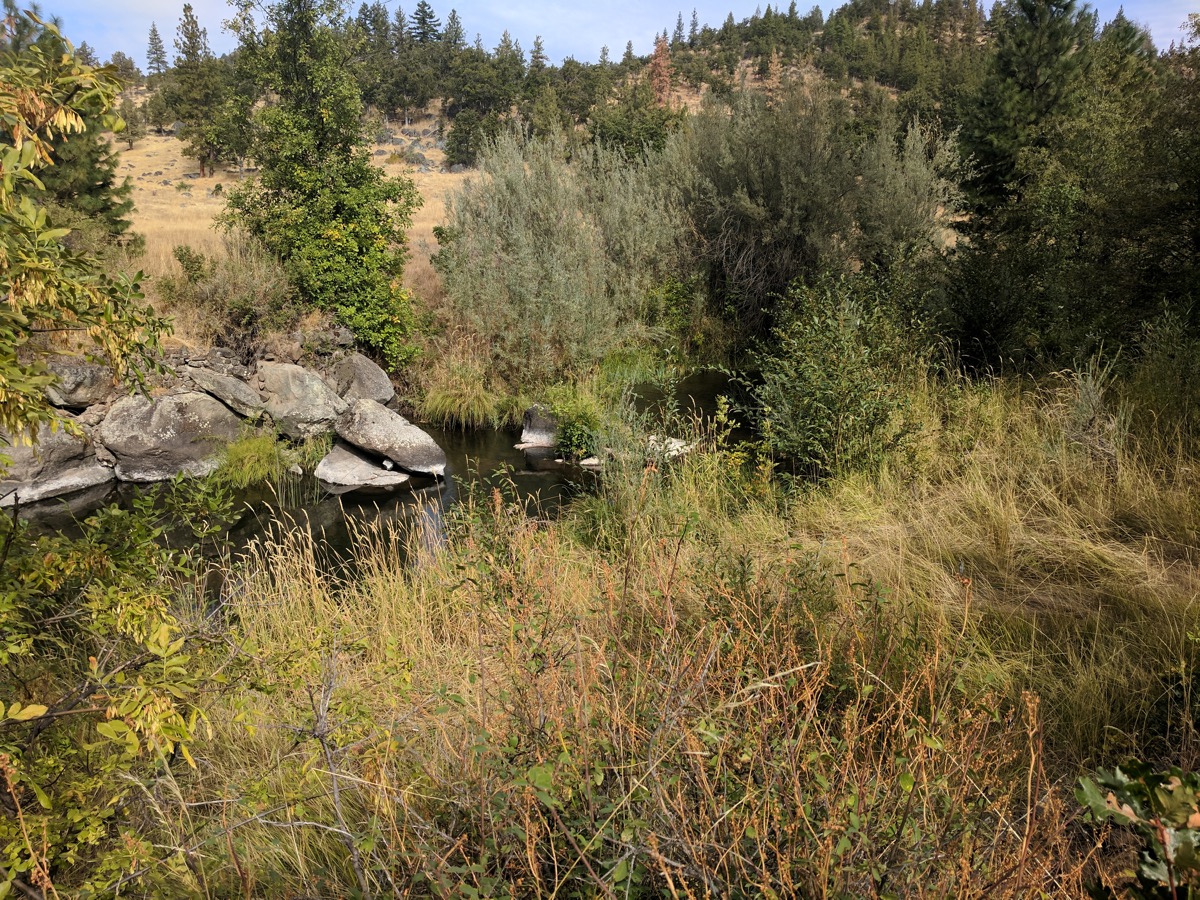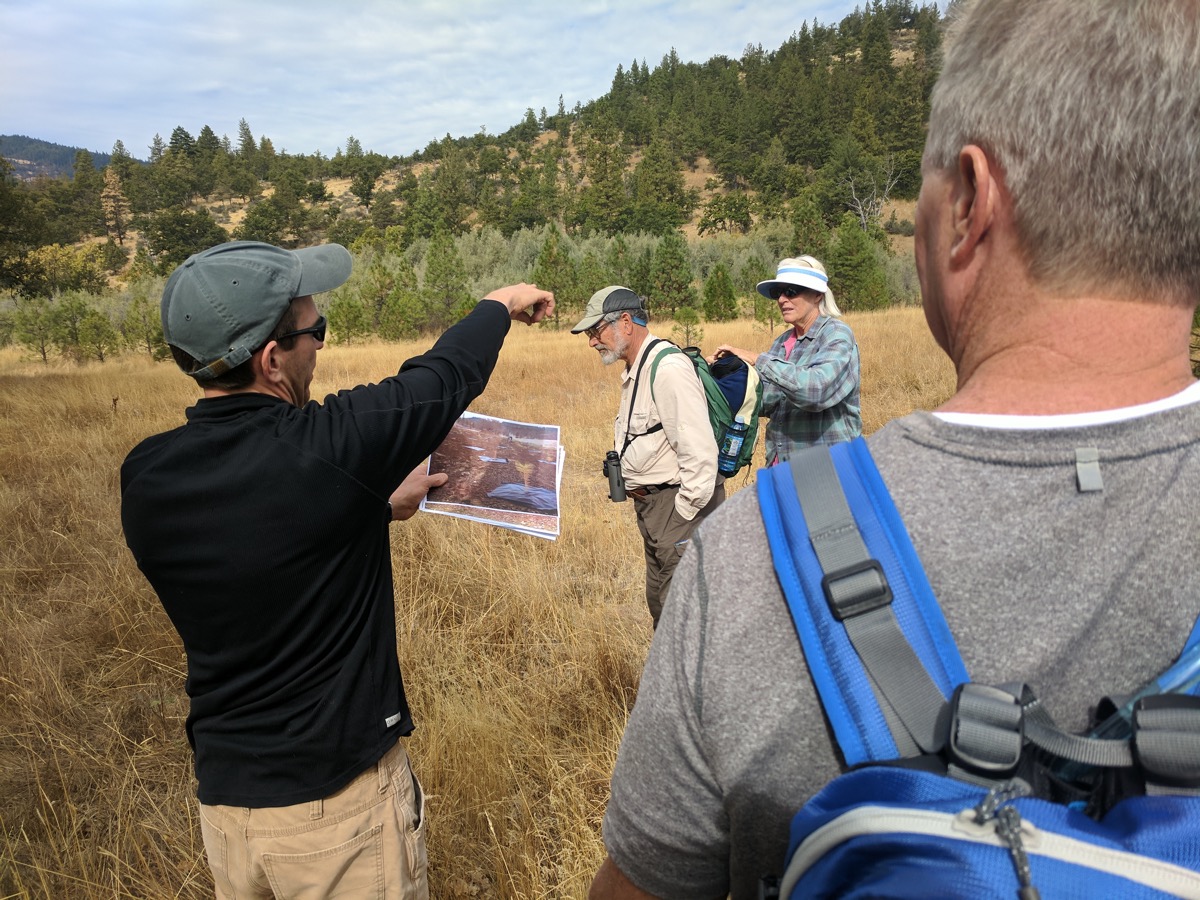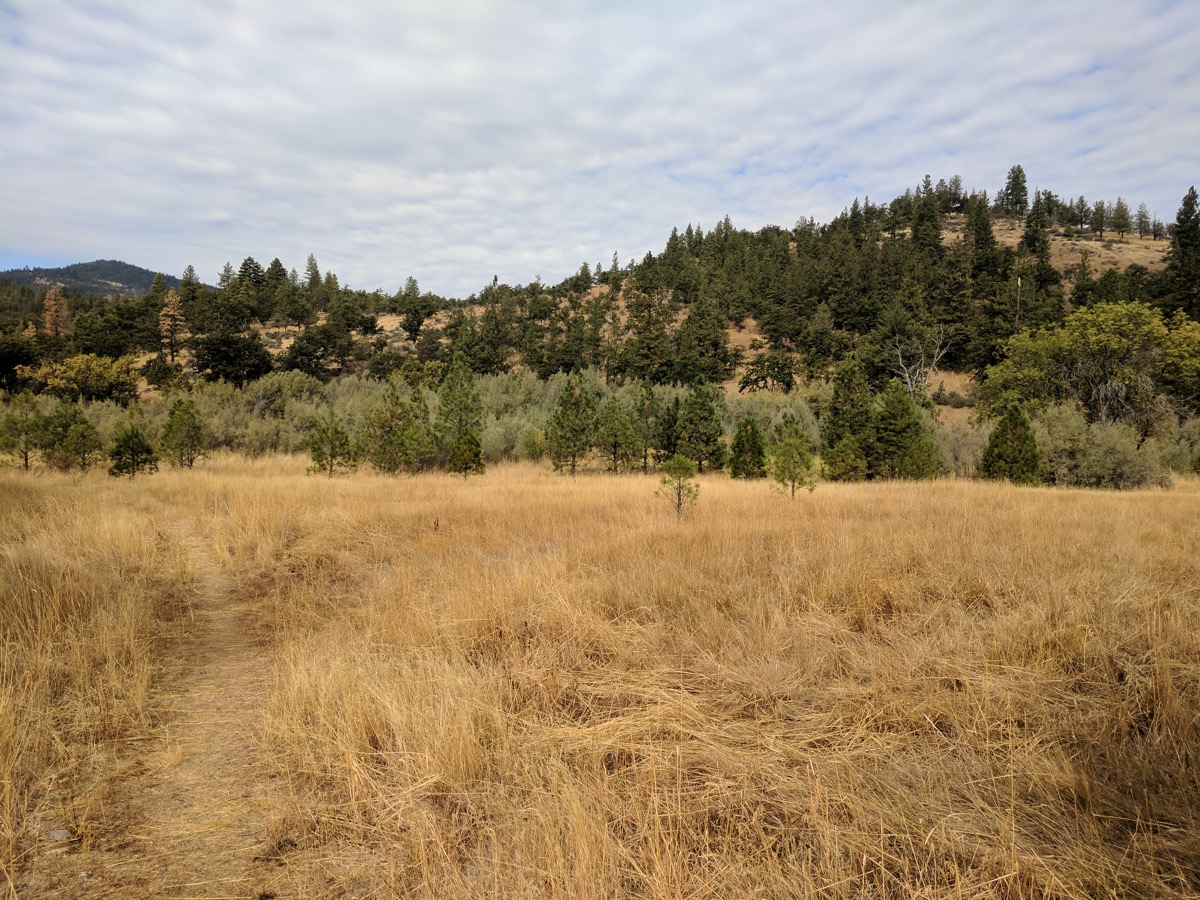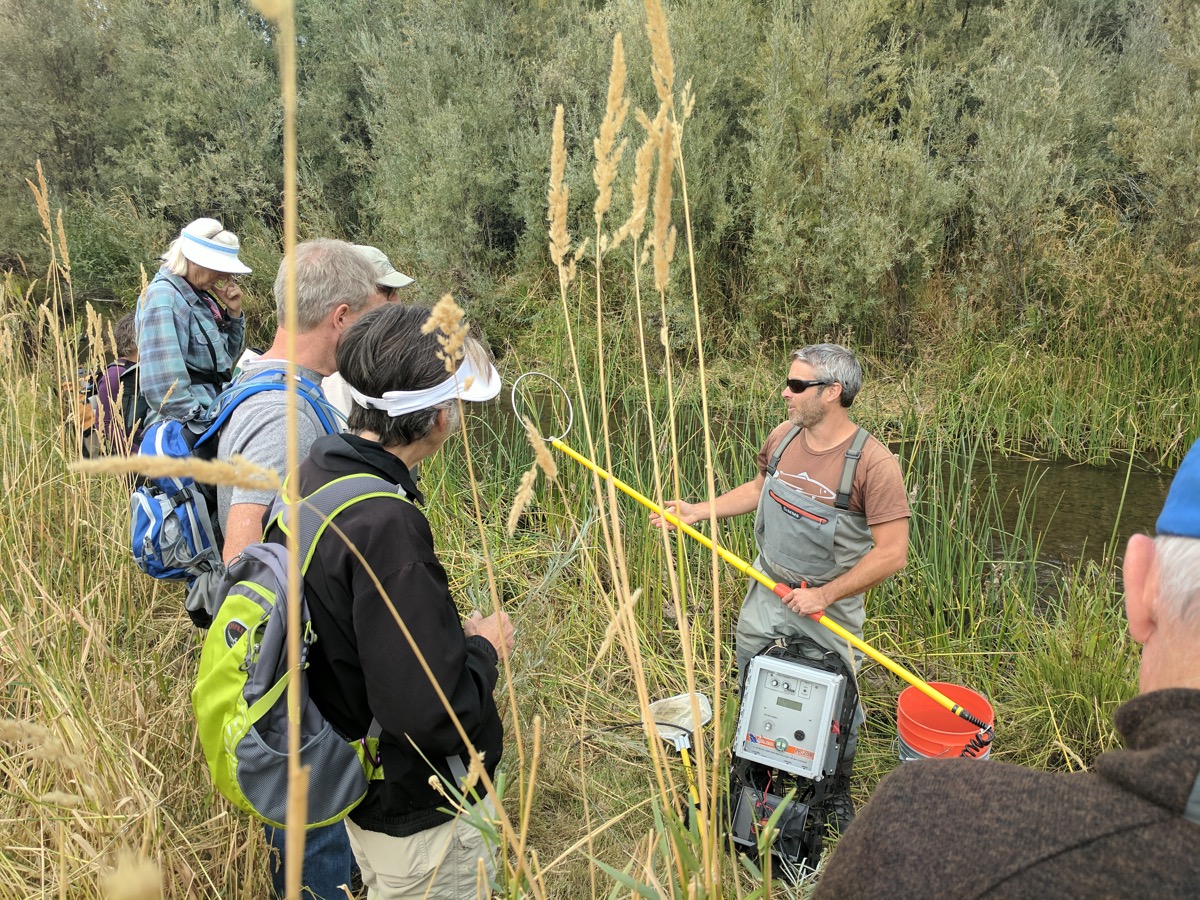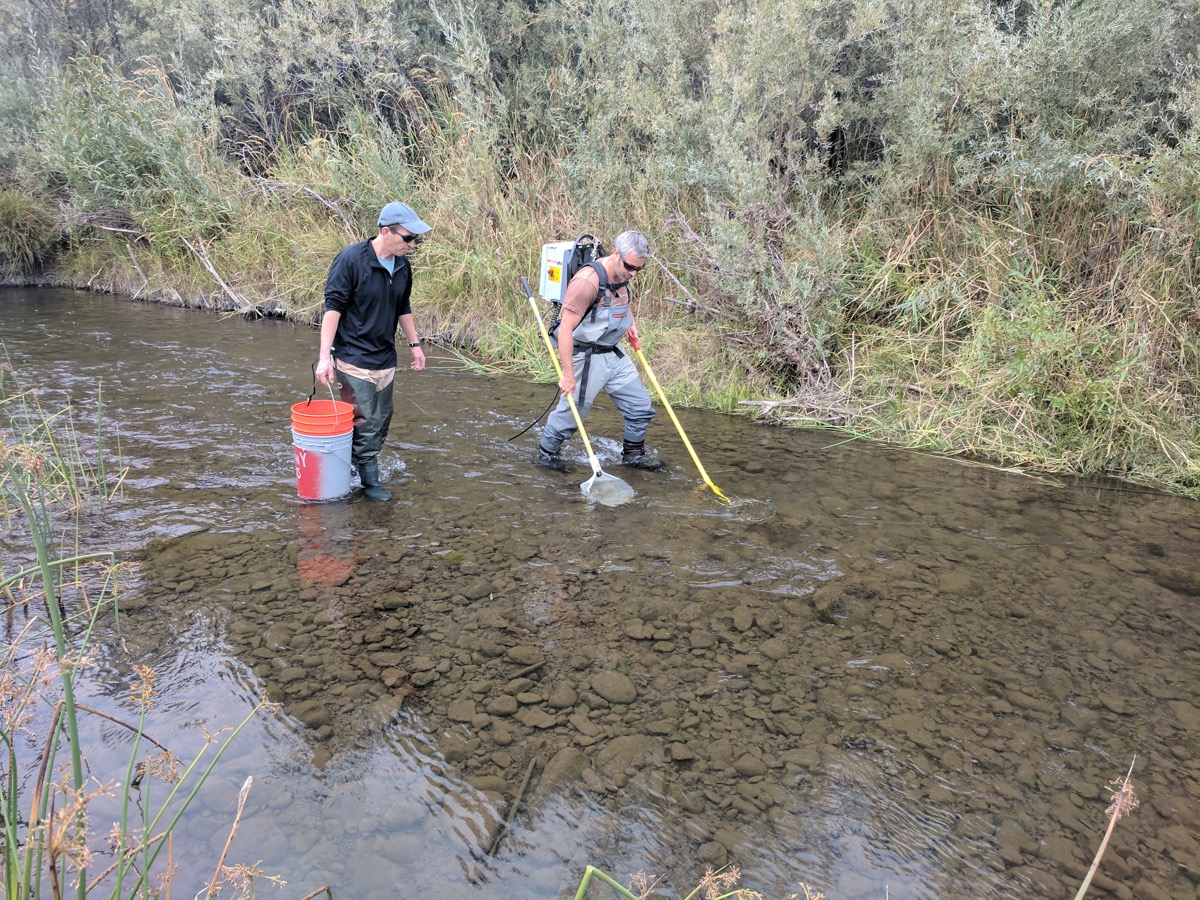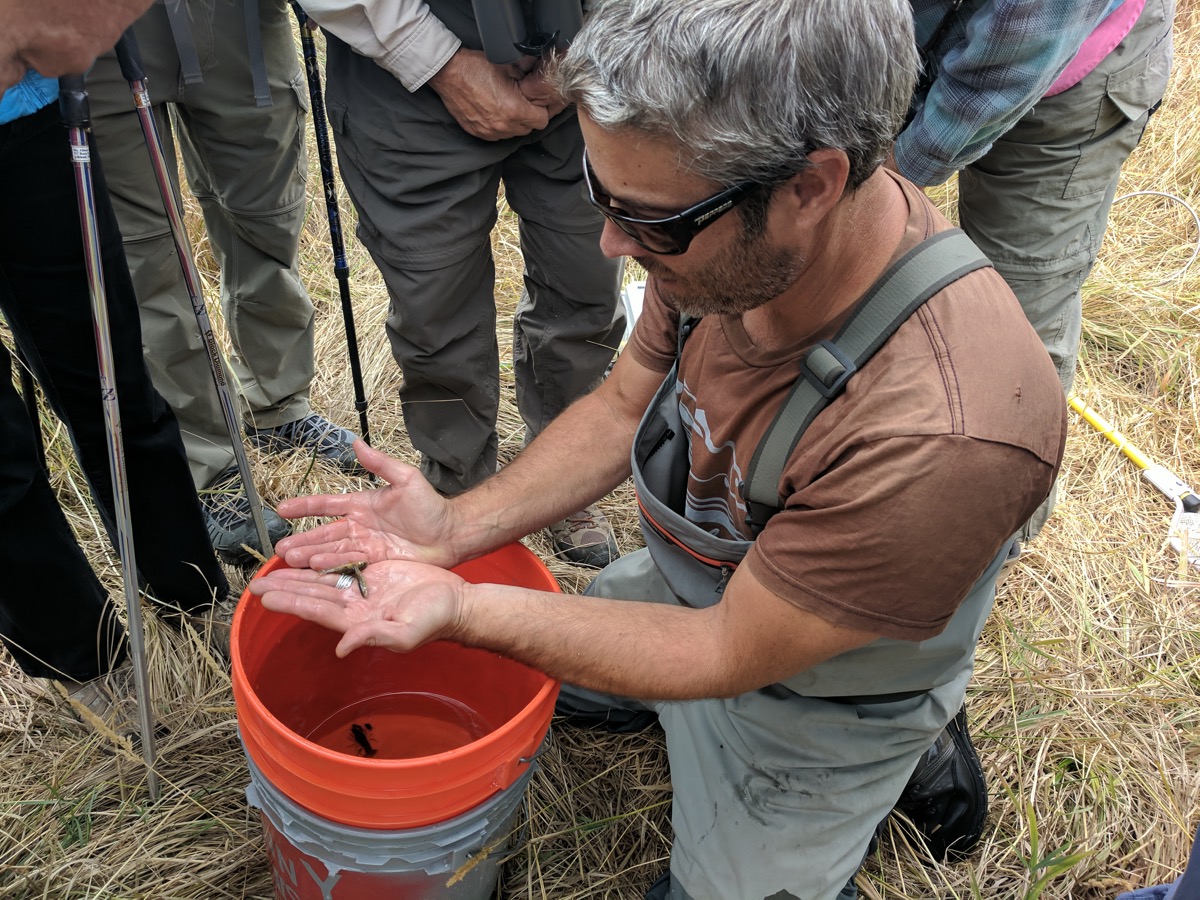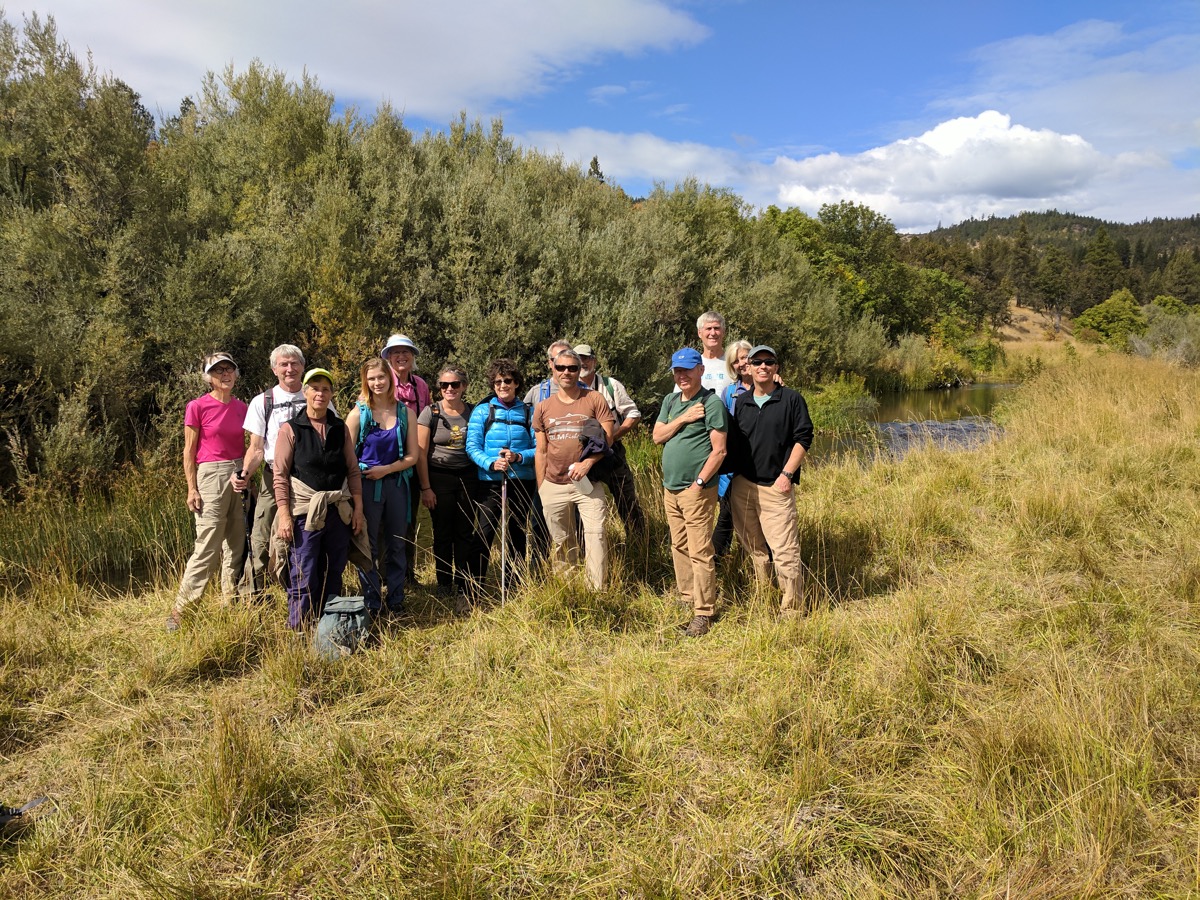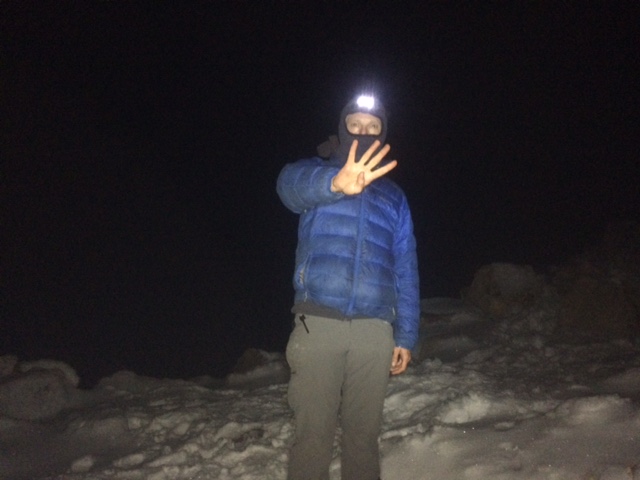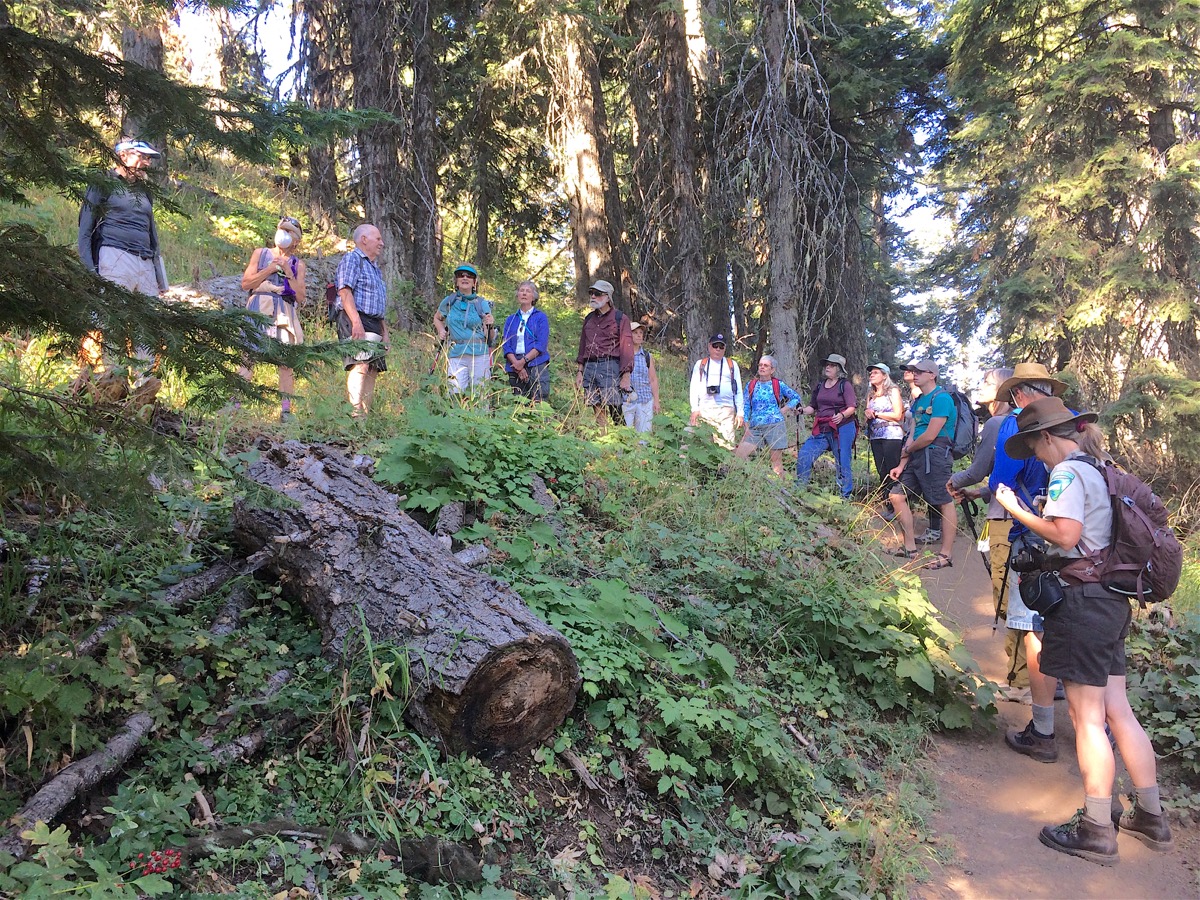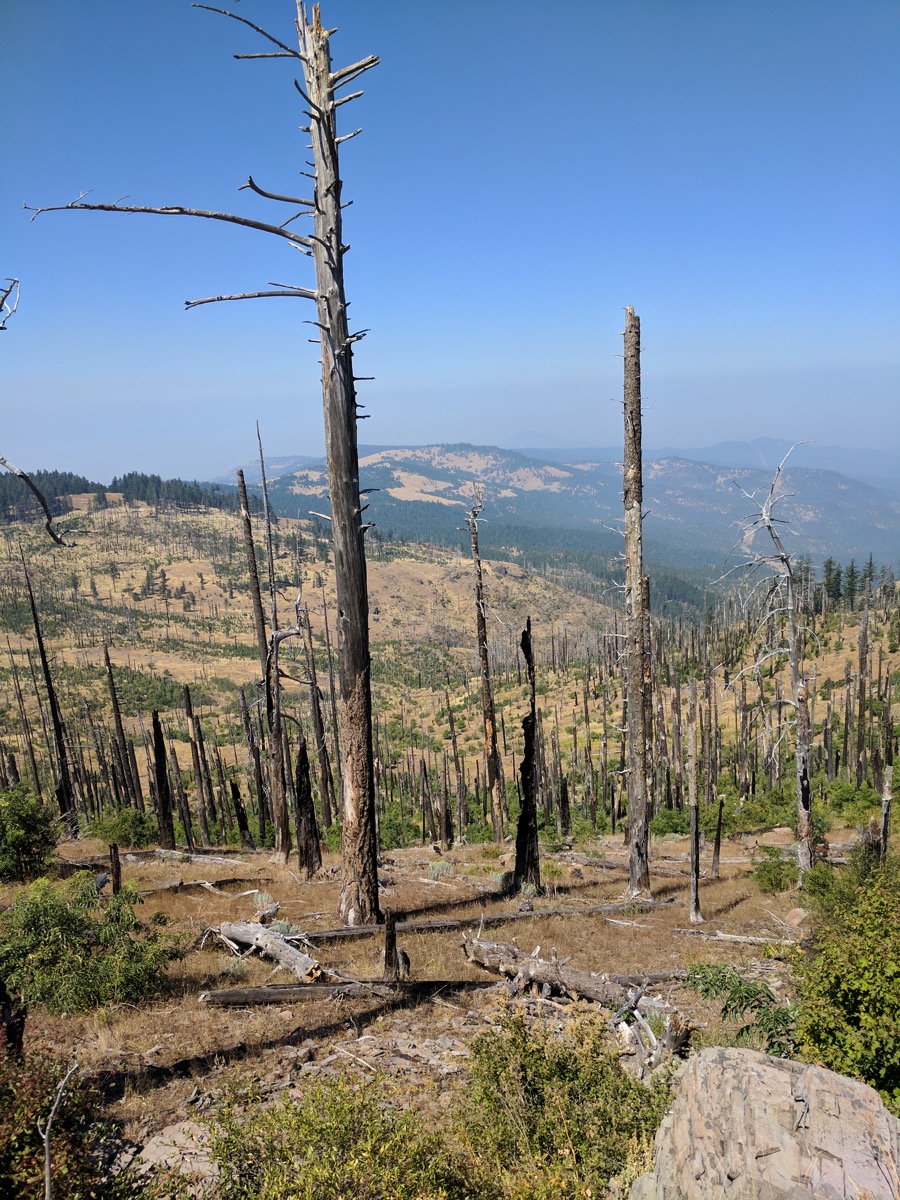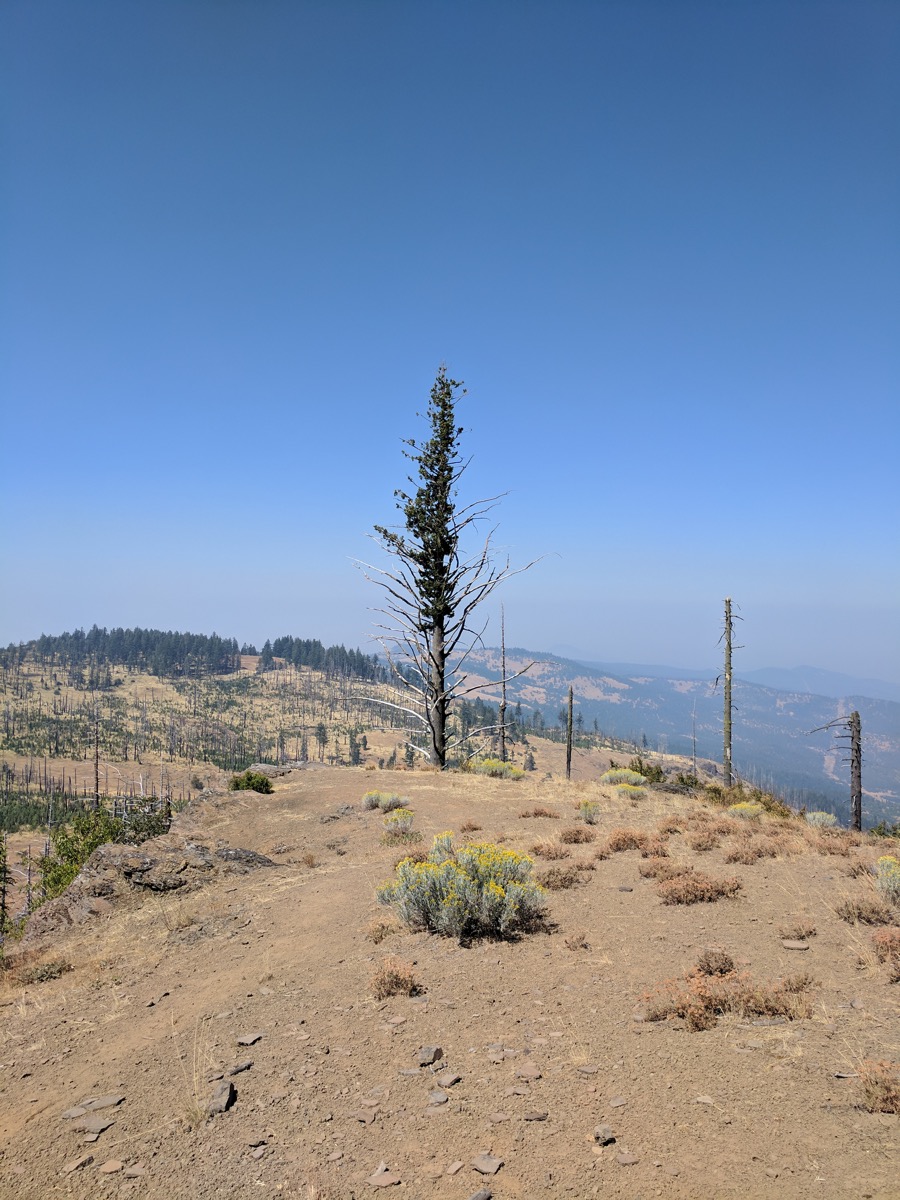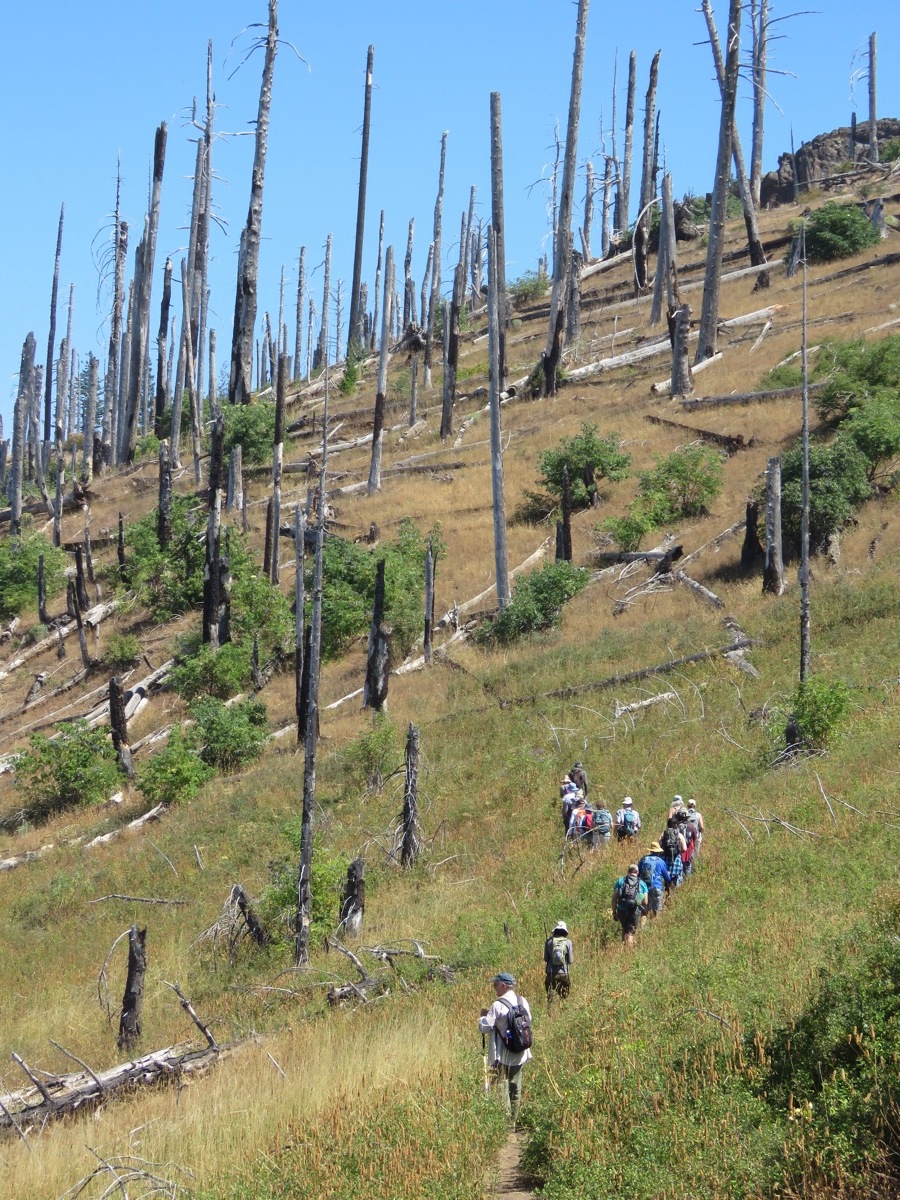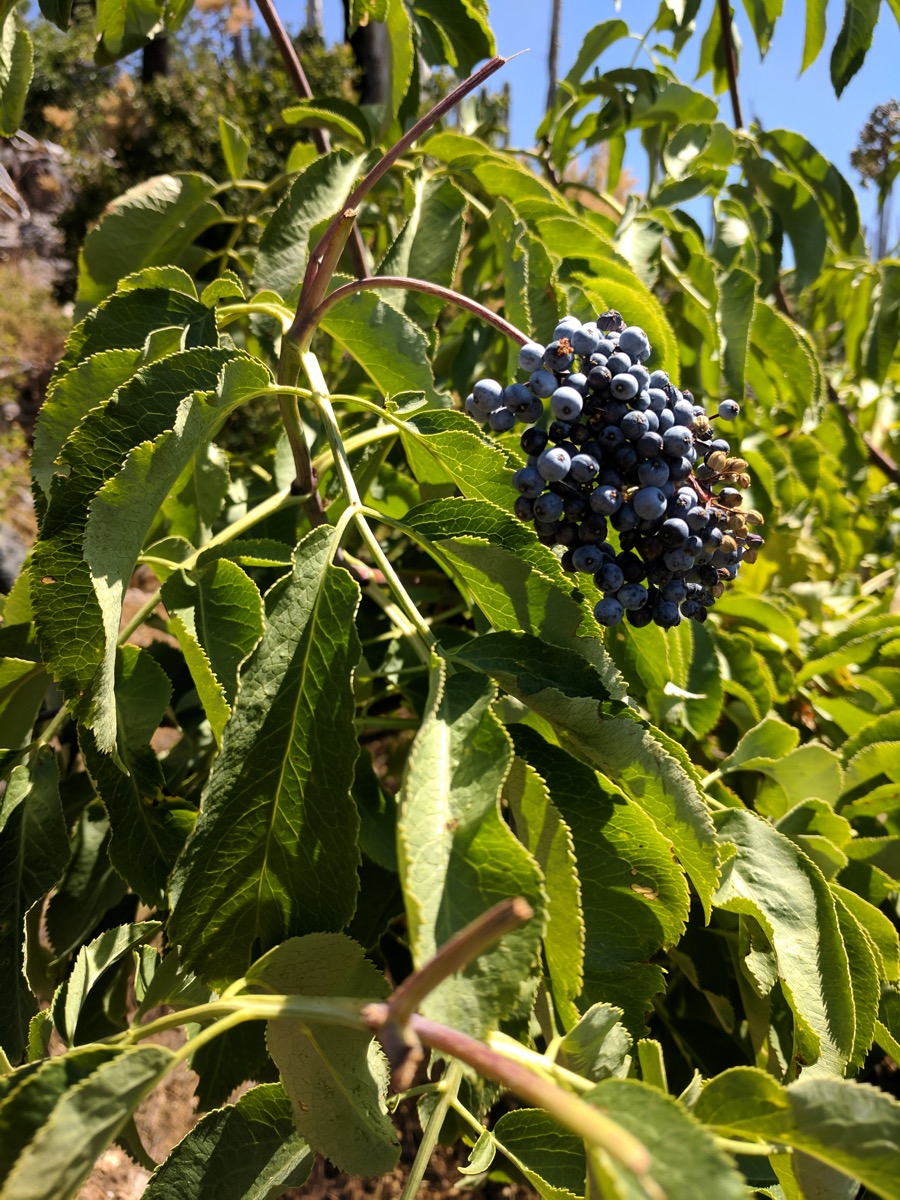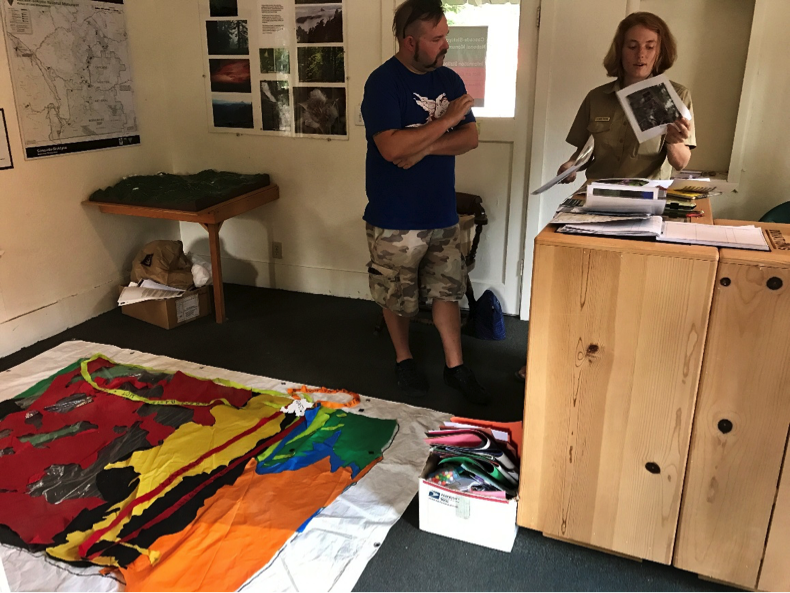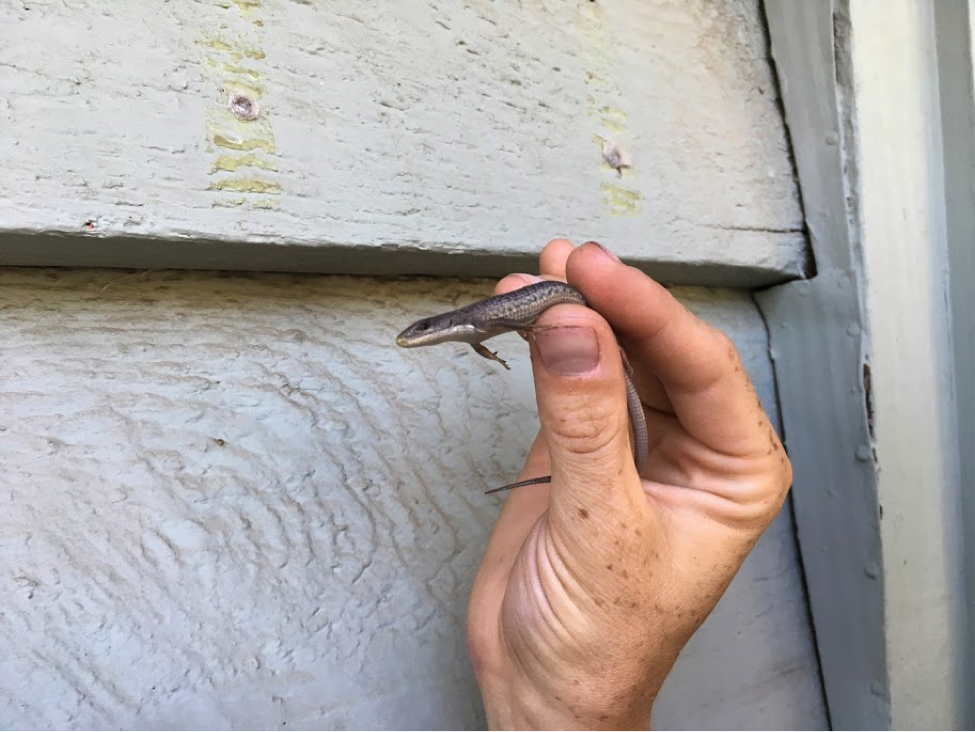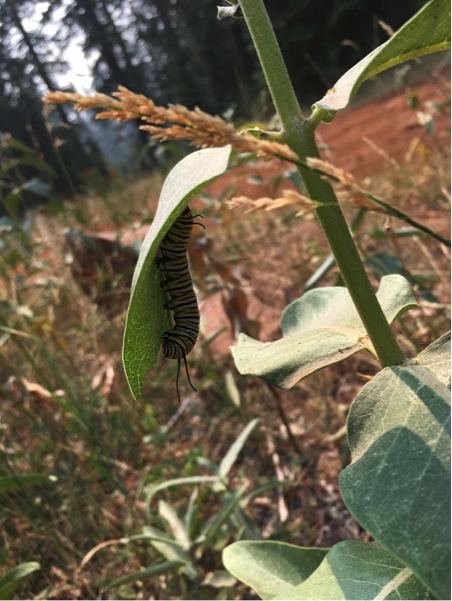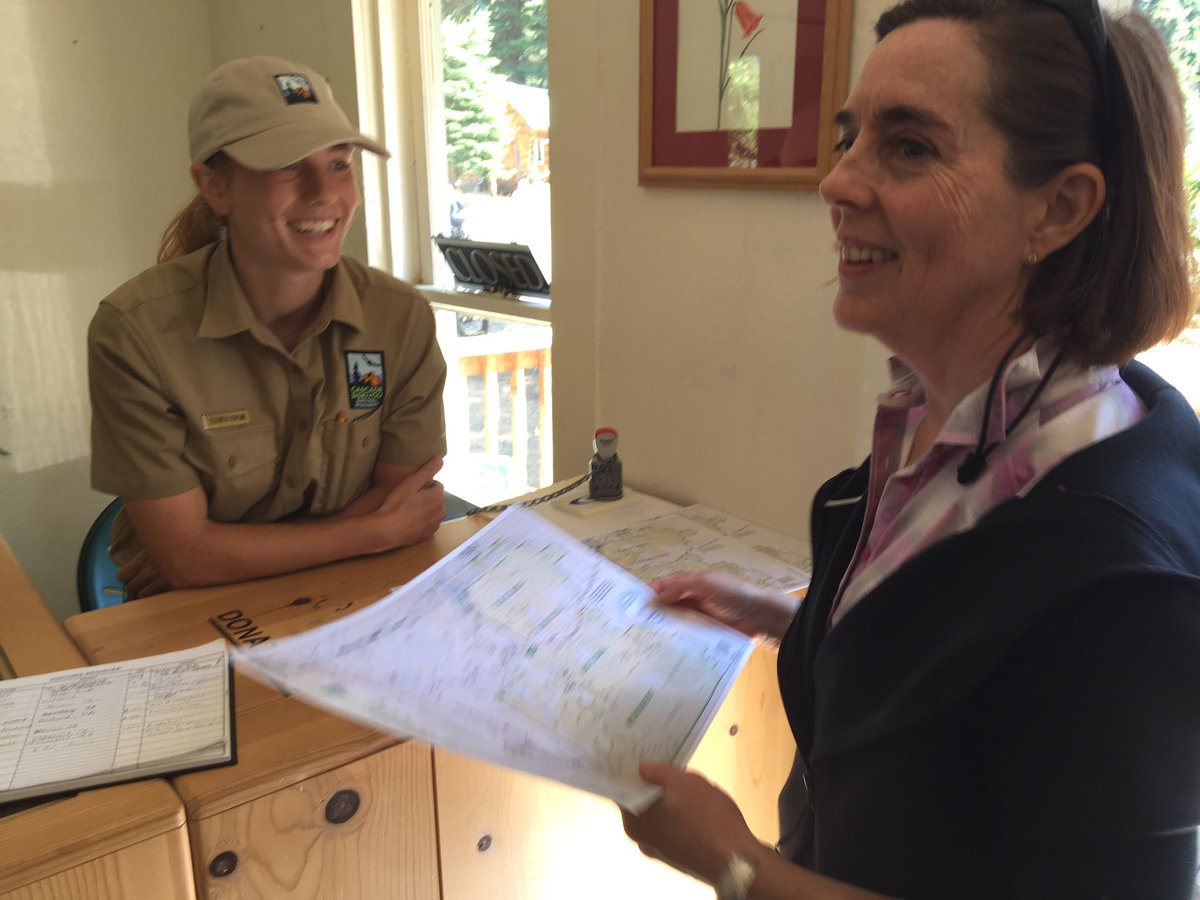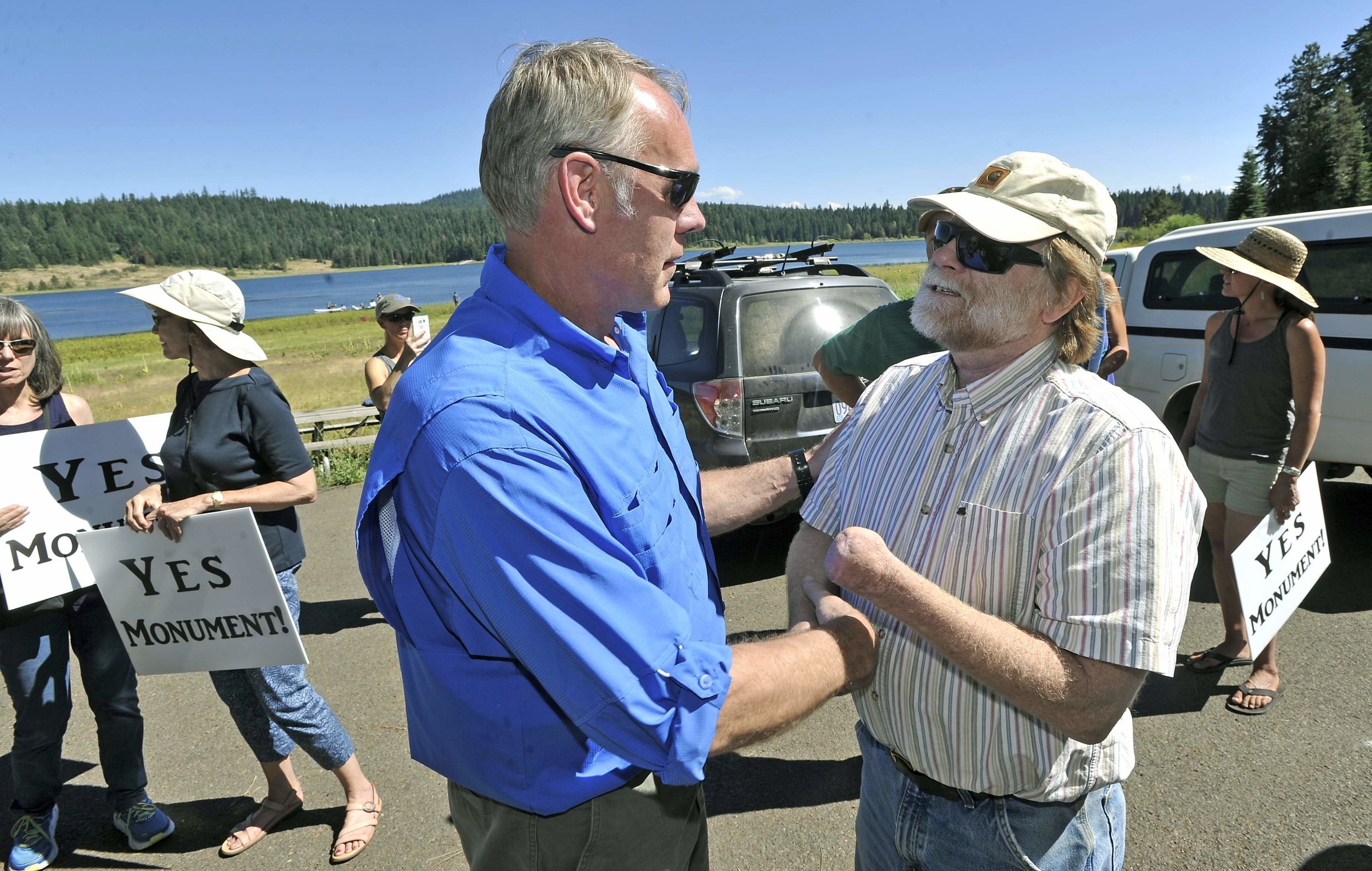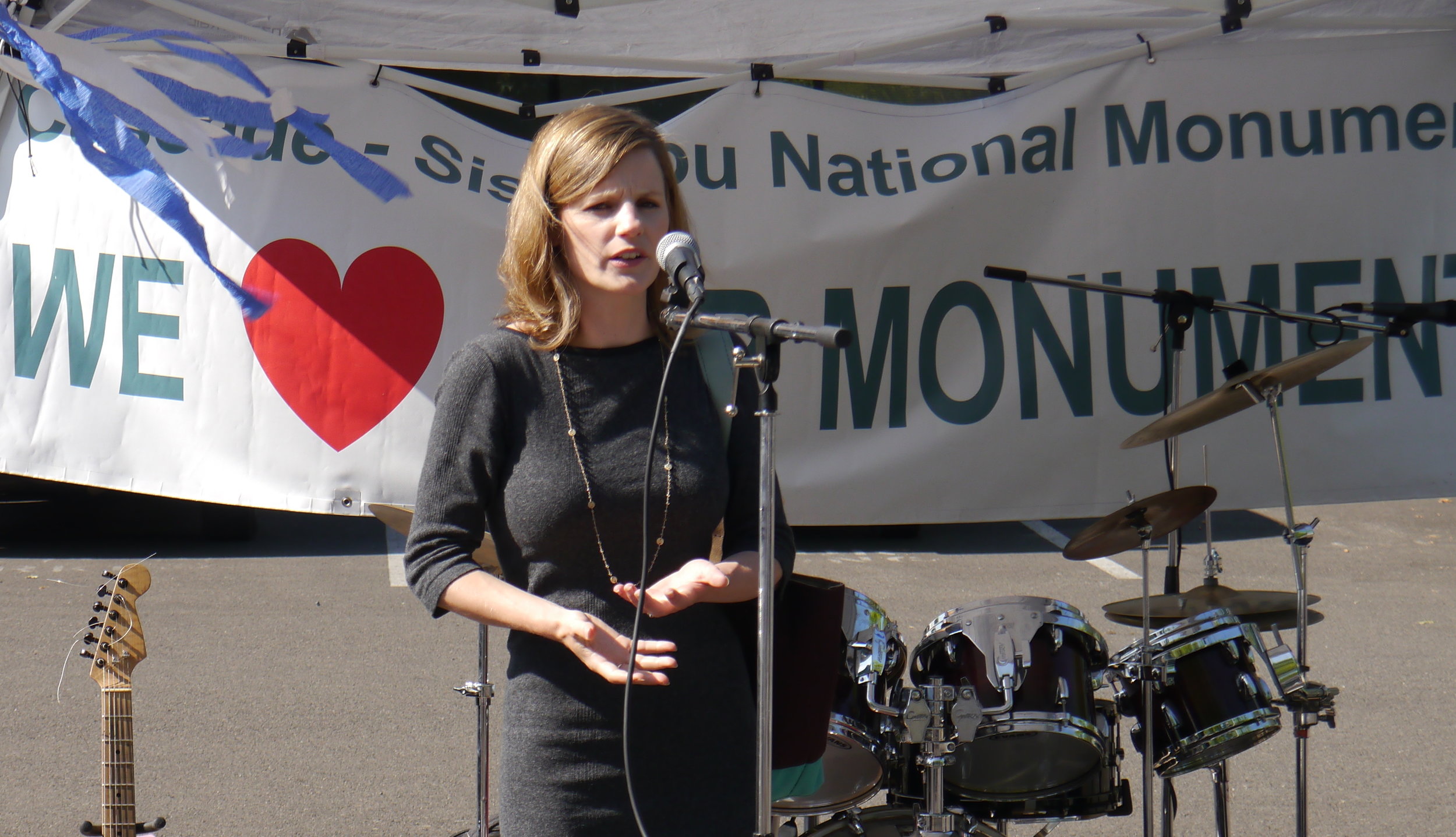April is Volunteer Month. Morgyn Ellis tells about her advocacy for the Cascade-Siskiyou National Monument, as a board member of the Friends of CSNM.
Morgyn Ellis, FCSNM Board Member (2016-18)
Photo by C Beekman
As an educator, I have always viewed environmental education as more than simply getting children and adults outdoors. This is an opportunity to engage people with the natural world in such a way that they are inspired to protect their favorite wild places through civic engagement, grassroots action, and lifestyle changes.
As a Student Board Member with the Friends of Cascade-Siskiyou National Monument, I was able to experience and learn firsthand what effective engagement, education, and advocacy looks like at a local level. I was on the front lines of a national movement to preserve the protections of our national monuments and public lands. (Note: During Morgyn's term, she led groups of students in the monument for the SOU Fall-in-the-Field; and served as an Interpretive Ranger Intern at the monument. She witnessed the public advocacy for, and then expansion of the CSNM borders, and then the review to reduce the monument boundaries.)
I now take these skills with me into my new position as Education Coordinator with Mass Audubon, a non-profit dedicated to protecting the nature of Massachusetts. I will continue to encourage my learners to view nature as more than just a walk in the woods. These invaluable collections of resources are where learners can be an integral part of preserving and to offer a voice for all the organisms and ecosystems that cannot speak in defense of themselves.
The Friends have been invaluable in my professional development and they have shown me a level of integrity and dedication to their mission that I will continue to strive for in my professional career as I move forward.
Morgan Ellis, former Board Secretary, 2017-18
SOU Student Board Member, 2016-17
Friends of Cascade-Siskiyou National Monument
The Friends of CSNM annually names an incoming SOU Environmental Education graduate student to become a Student Board Member to gain professional leadership experience with a non-profit organization. After graduation, several former SOU student board members continue service until they find a job and move away from southern Oregon.
Sign up to join the Board of Friends of CSNM and advocate for the monument. You don't have to be a student for board service.


